Today on The Slanted Lens, we’ve got Tola K. here with us.
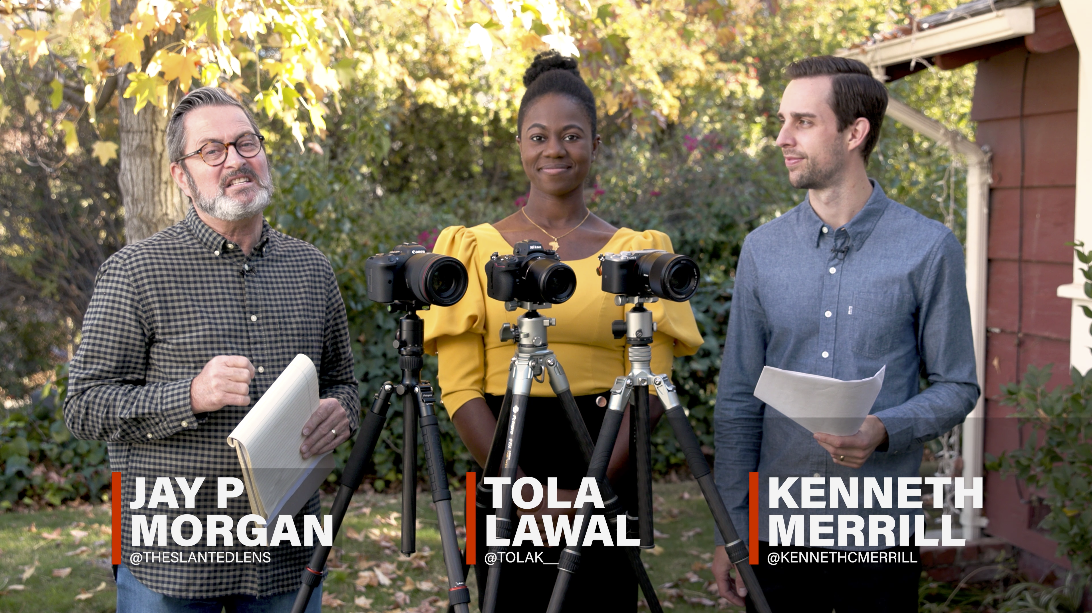 We’re going to take a look at three great cameras that are kind of one step down from the absolute best mirrorless cameras, cameras in their classes and by these manufacturers.
We’re going to take a look at three great cameras that are kind of one step down from the absolute best mirrorless cameras, cameras in their classes and by these manufacturers.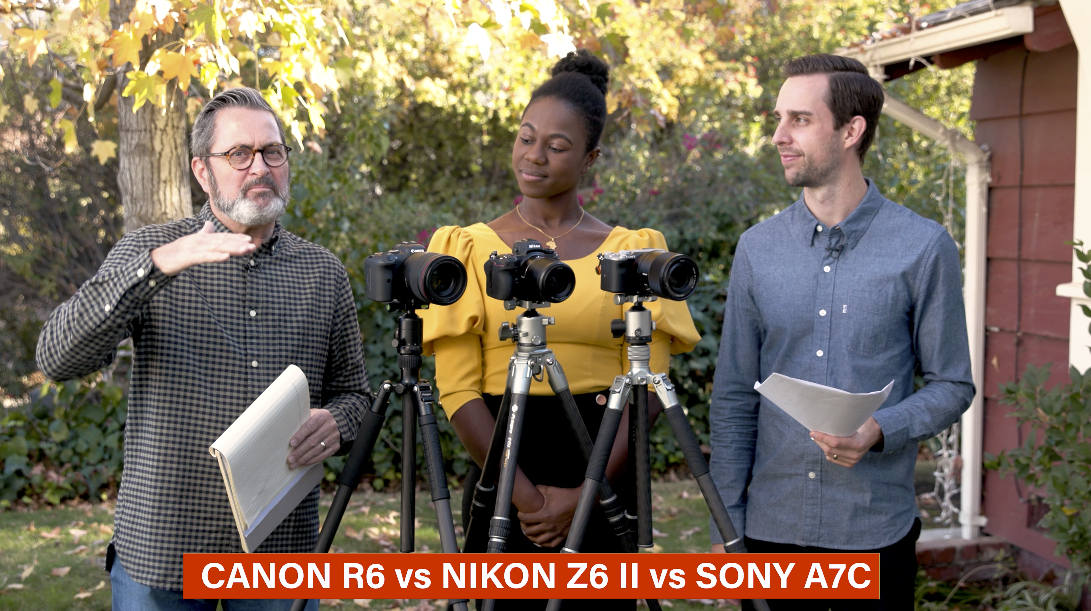 Specifically, we’re going to take a look at the Z6 II by Nikon, Nikon’s new camera. They just came out and I’m really interested to see how it compares to these other cameras. So what do you think about these cameras?
Specifically, we’re going to take a look at the Z6 II by Nikon, Nikon’s new camera. They just came out and I’m really interested to see how it compares to these other cameras. So what do you think about these cameras?
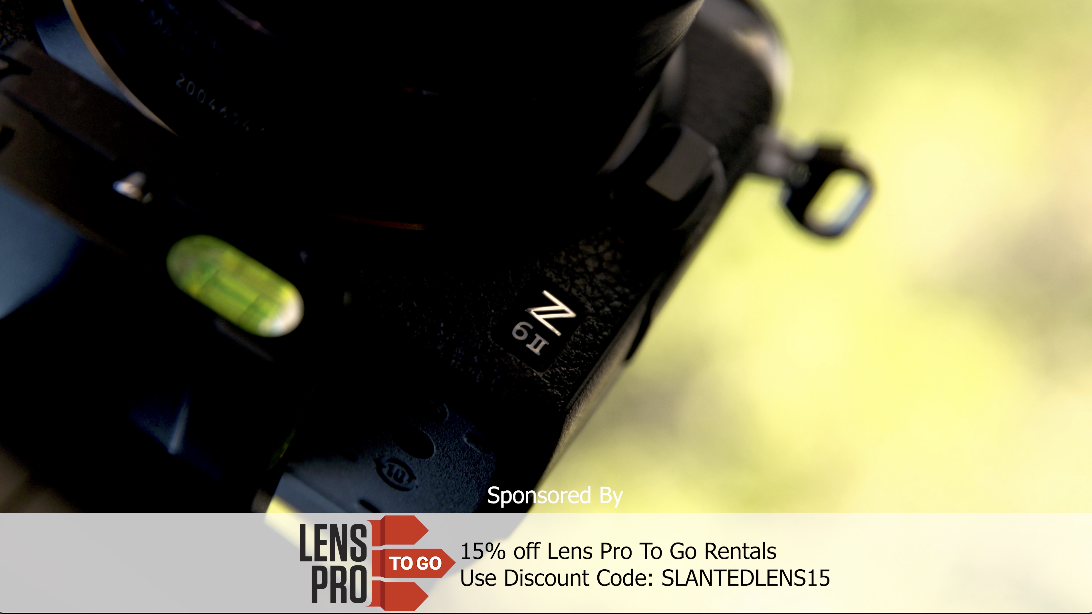 I’m excited for this because the Canon R6 has been out for half a year and we haven’t taken a look at it yet. And then of course, the Nikon Z6 II, which is half the price brand new from the factory. It has the same sensor as the old version, but a better processor. So it’ll be faster autofocus and less banding. The buffer is like three times faster and that is really great. (We used FotoproUSA Tripods.)
I’m excited for this because the Canon R6 has been out for half a year and we haven’t taken a look at it yet. And then of course, the Nikon Z6 II, which is half the price brand new from the factory. It has the same sensor as the old version, but a better processor. So it’ll be faster autofocus and less banding. The buffer is like three times faster and that is really great. (We used FotoproUSA Tripods.)
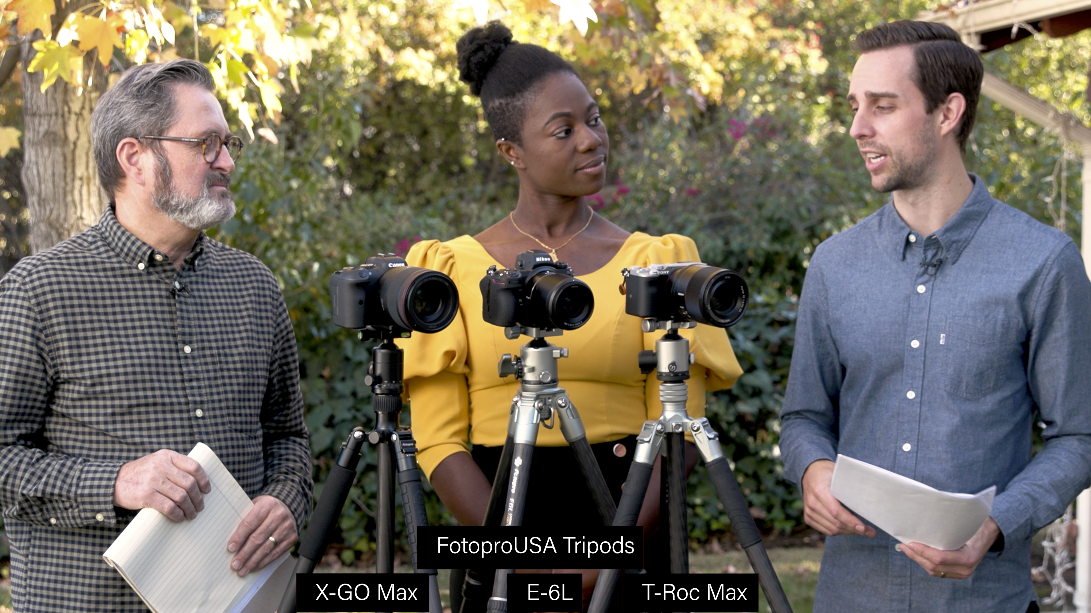 And then we have the Sony a7C. This is a great little camera, we’ve looked at it already. I’m excited to see how it stacks up against cameras that are priced a little higher. These are just slightly more premium and have a little bit better features. But I want to see how it pans out because a lot of people choose the Sony just for the size.
And then we have the Sony a7C. This is a great little camera, we’ve looked at it already. I’m excited to see how it stacks up against cameras that are priced a little higher. These are just slightly more premium and have a little bit better features. But I want to see how it pans out because a lot of people choose the Sony just for the size.
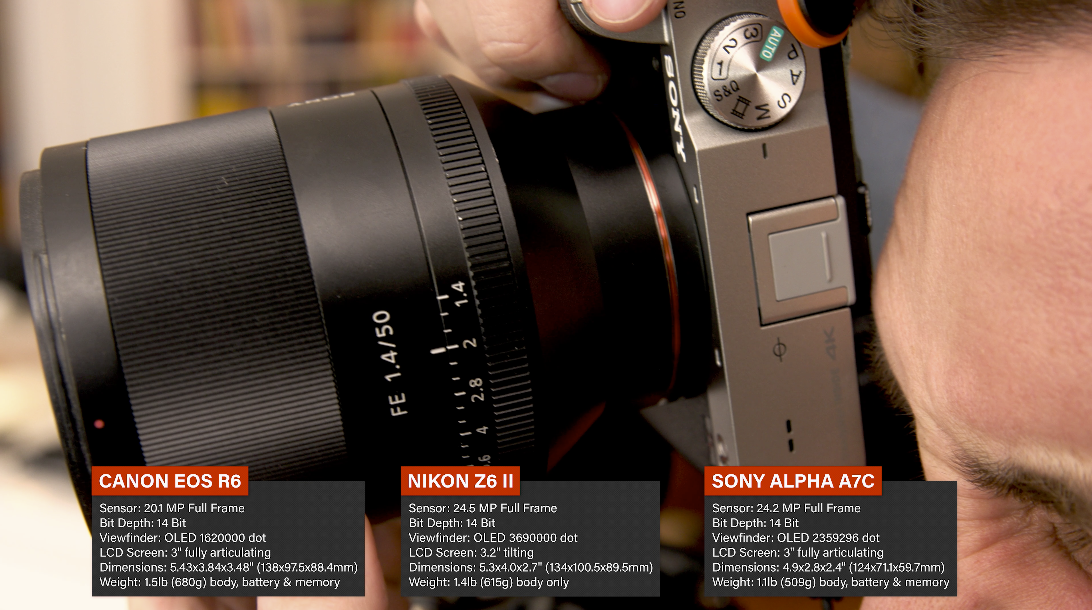 Let’s take a look at these cameras. Let’s see how they compare with each other. Let’s take a look at the ergonomics of these three cameras and see how this new Nikon compares with the contemporaries.
Let’s take a look at these cameras. Let’s see how they compare with each other. Let’s take a look at the ergonomics of these three cameras and see how this new Nikon compares with the contemporaries.
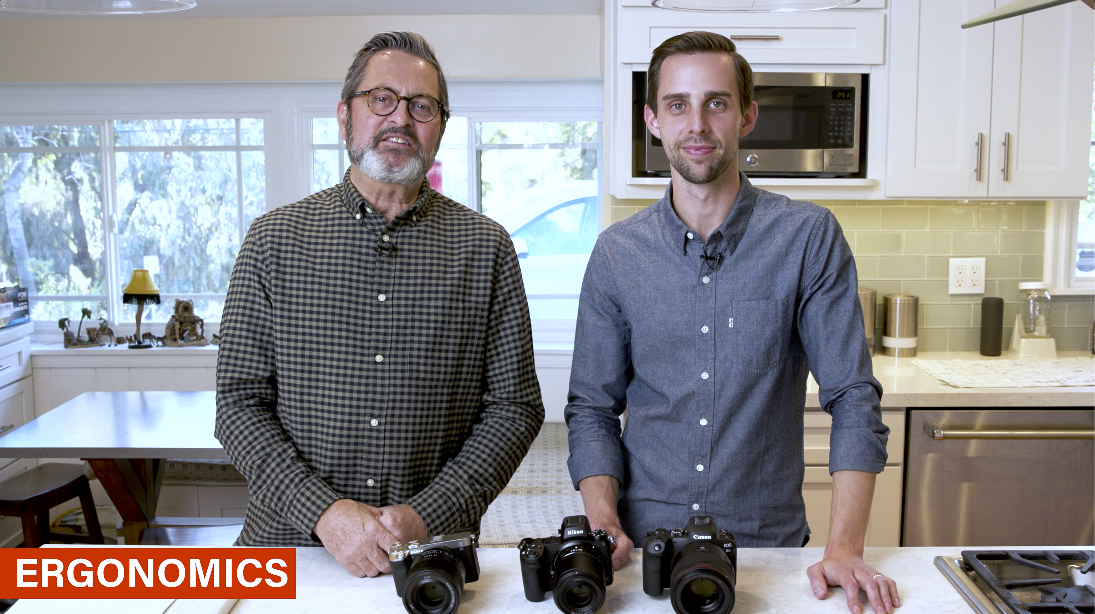 I like how we have a biggest to smallest line up here. I usually associate Nikon with bigger cameras because their DSLRs are really big and kind of heavy. But this is in the mid-range compared to the new Canons, which are definitely a lot more hefty.
I like how we have a biggest to smallest line up here. I usually associate Nikon with bigger cameras because their DSLRs are really big and kind of heavy. But this is in the mid-range compared to the new Canons, which are definitely a lot more hefty. 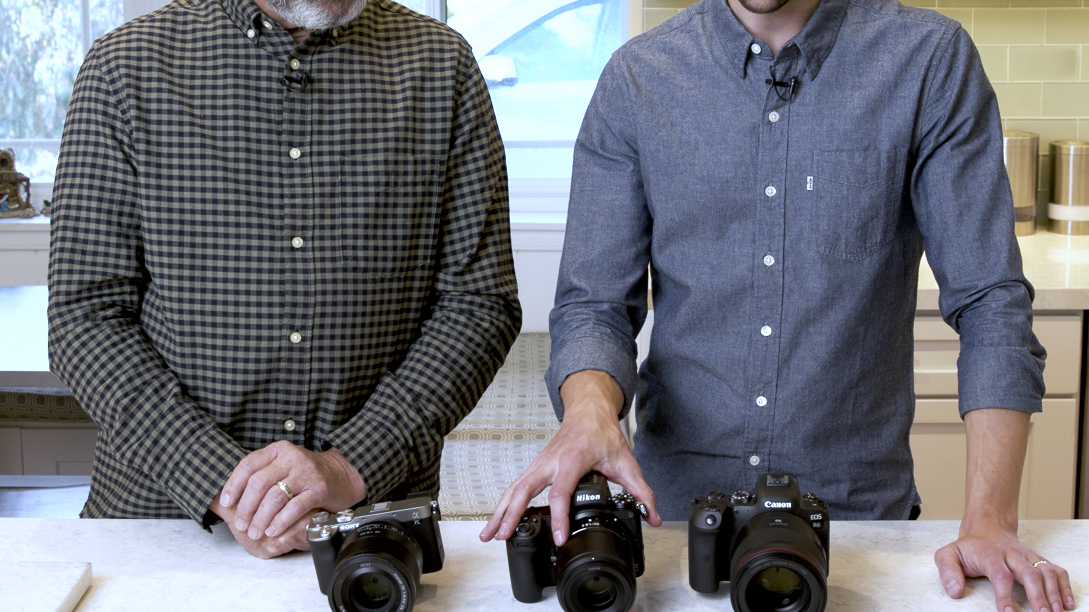 I like that Canon has a flip out screen. I love the Canon’s joystick and the dial. The Canon’s new body style is just so much better than the one they had for the Canon R.
I like that Canon has a flip out screen. I love the Canon’s joystick and the dial. The Canon’s new body style is just so much better than the one they had for the Canon R.
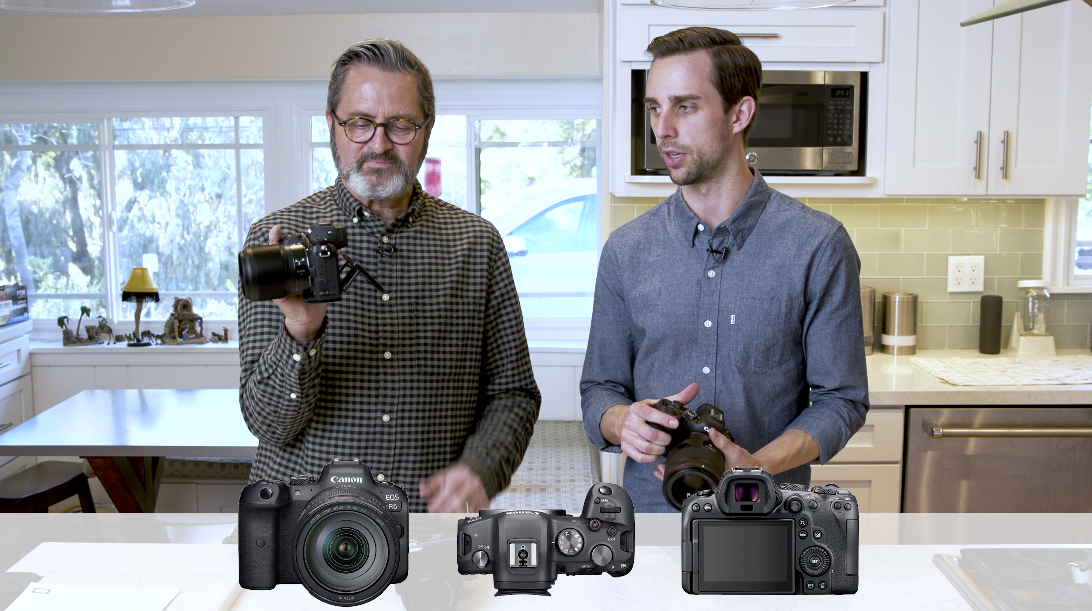 Whereas the Nikon does not have a flip out screen. I don’t understand any camera company that’s trying to get in and compete in the video world that has this screen anymore. And that includes the Sonys that have this. It really needs to have a pop out screen.
Whereas the Nikon does not have a flip out screen. I don’t understand any camera company that’s trying to get in and compete in the video world that has this screen anymore. And that includes the Sonys that have this. It really needs to have a pop out screen.
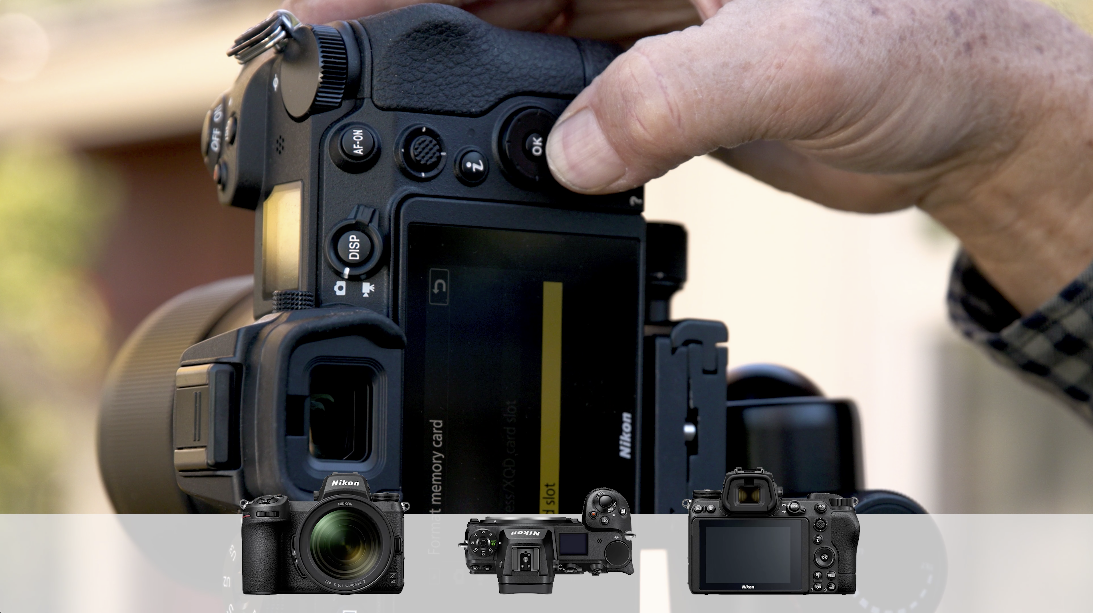 I will say my one complaint about the Nikon Z bodies is the part near my thumb feels really cramped. There’s a lot of buttons here. And I feel like the joystick and this rear dial are both in the wrong spot. You have to loosen your grip in order to use either things compared to the Canon.
I will say my one complaint about the Nikon Z bodies is the part near my thumb feels really cramped. There’s a lot of buttons here. And I feel like the joystick and this rear dial are both in the wrong spot. You have to loosen your grip in order to use either things compared to the Canon. 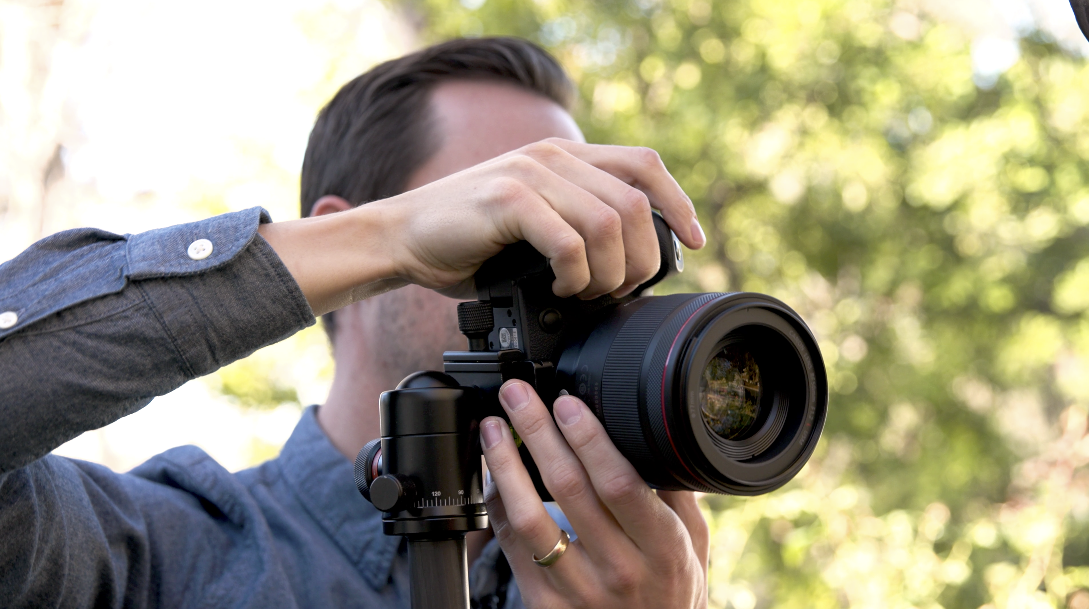 So I think each of these cameras has a lot of things going for them individually in terms of ergonomics, and it really just comes down to matter of taste and what your personal application is. Some people will think that Sony is perfect like our friend, Andy. I personally really like this Canon body. And I like the size and the dials and especially the flip out screen.
So I think each of these cameras has a lot of things going for them individually in terms of ergonomics, and it really just comes down to matter of taste and what your personal application is. Some people will think that Sony is perfect like our friend, Andy. I personally really like this Canon body. And I like the size and the dials and especially the flip out screen.
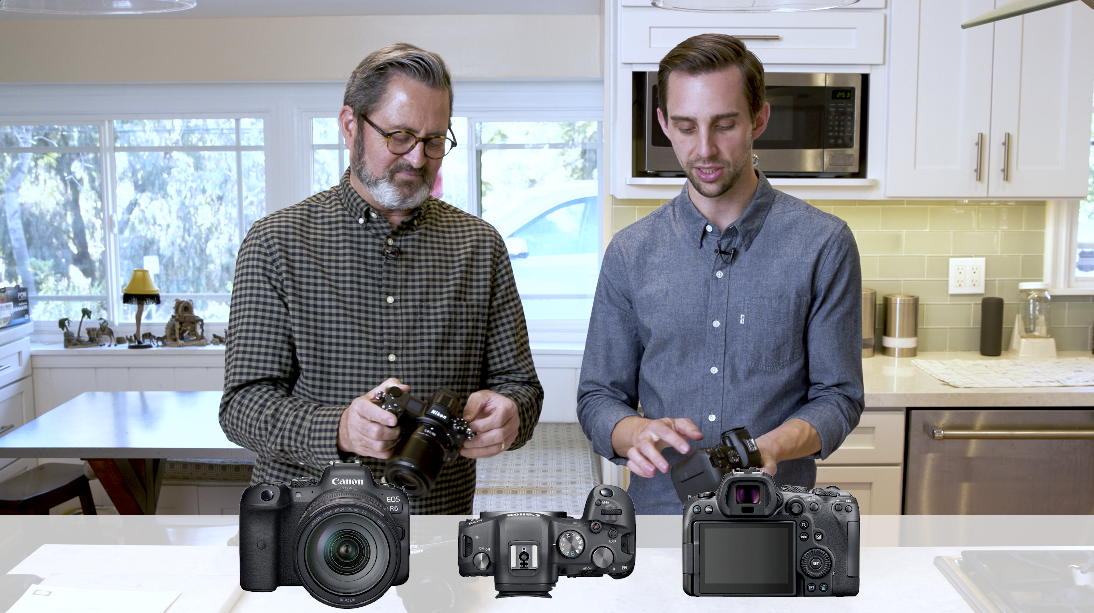 But the Nikon comes in a very solid place here because it has a lot of the dials and things you want and buttons to be able to make it very easy to use. And it’s a very small size. It’s a very compact camera without compromising too much on usability.
But the Nikon comes in a very solid place here because it has a lot of the dials and things you want and buttons to be able to make it very easy to use. And it’s a very small size. It’s a very compact camera without compromising too much on usability.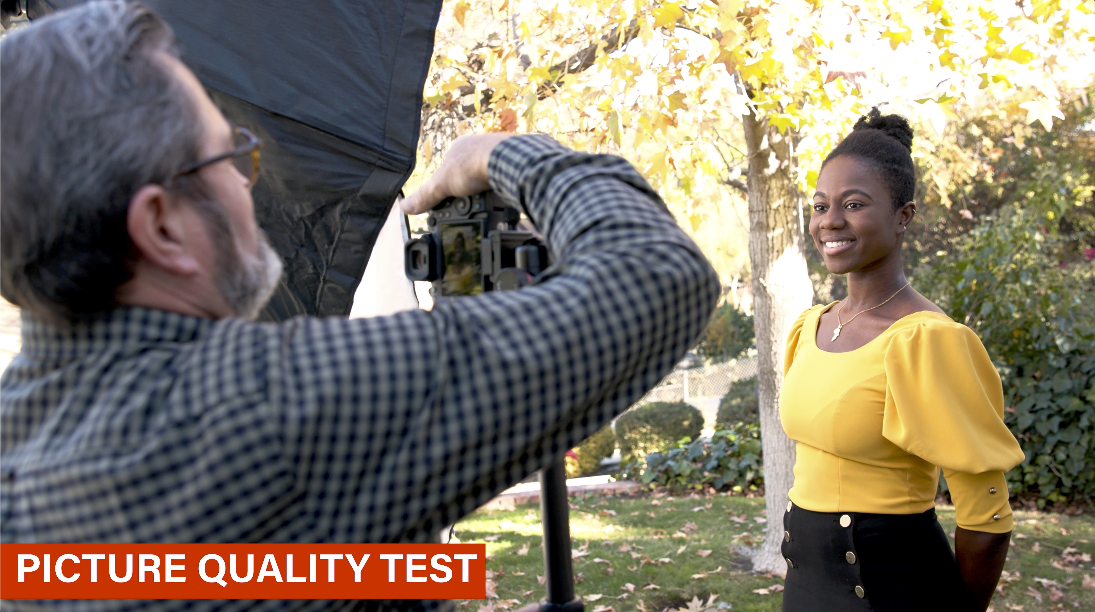 Next we’re going to do the picture quality test. We’re going to do a waist up head and shoulder shot. We are going to set each of the cameras at the same camera settings 320 at 100 ISO at f/2.0. So it’s a pretty shallow depth of field to give us a good look at the bokeh in the background and see how the lenses look and how the sensors really render the color. We’ll put a SpyderCheckr in there just so we can see the colors. We really want to see what the color science of the sensor looks like in this image quality test.
Next we’re going to do the picture quality test. We’re going to do a waist up head and shoulder shot. We are going to set each of the cameras at the same camera settings 320 at 100 ISO at f/2.0. So it’s a pretty shallow depth of field to give us a good look at the bokeh in the background and see how the lenses look and how the sensors really render the color. We’ll put a SpyderCheckr in there just so we can see the colors. We really want to see what the color science of the sensor looks like in this image quality test.
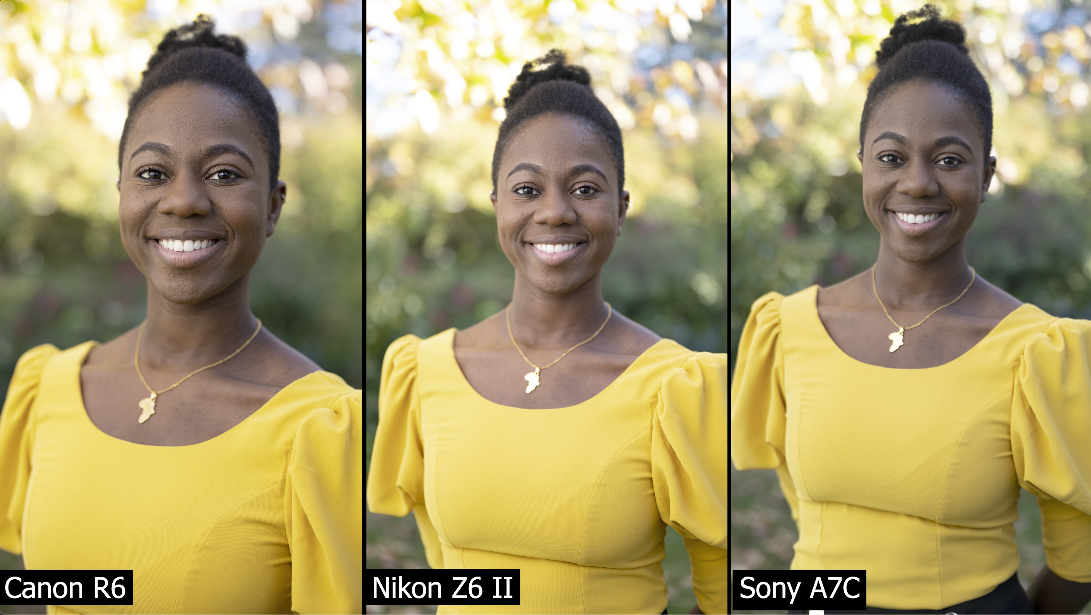 So here’s our picture quality test. And the minute you put these up on the screen, it’s really obvious to me that we have the Canon color on the left, the Nikon color in the middle and the Sony on the right. The Canon has this kind of warmth to the color. You see it in the yellow and you see it in the greens. Then the Nikon is much more neutral. It has beautiful color. Then Sony is a little more greenish, and the color isn’t quite as rich. You could correct all of these and match them. The Sony is a little darker, as usual.
So here’s our picture quality test. And the minute you put these up on the screen, it’s really obvious to me that we have the Canon color on the left, the Nikon color in the middle and the Sony on the right. The Canon has this kind of warmth to the color. You see it in the yellow and you see it in the greens. Then the Nikon is much more neutral. It has beautiful color. Then Sony is a little more greenish, and the color isn’t quite as rich. You could correct all of these and match them. The Sony is a little darker, as usual.
All three cameras look great. I am partial to Canon’s image. It’s just my taste. But you can manipulate these all sorts of different ways and they’ll all look really good. I don’t know if there’s a clear winner. There is incredible quality with all of them.
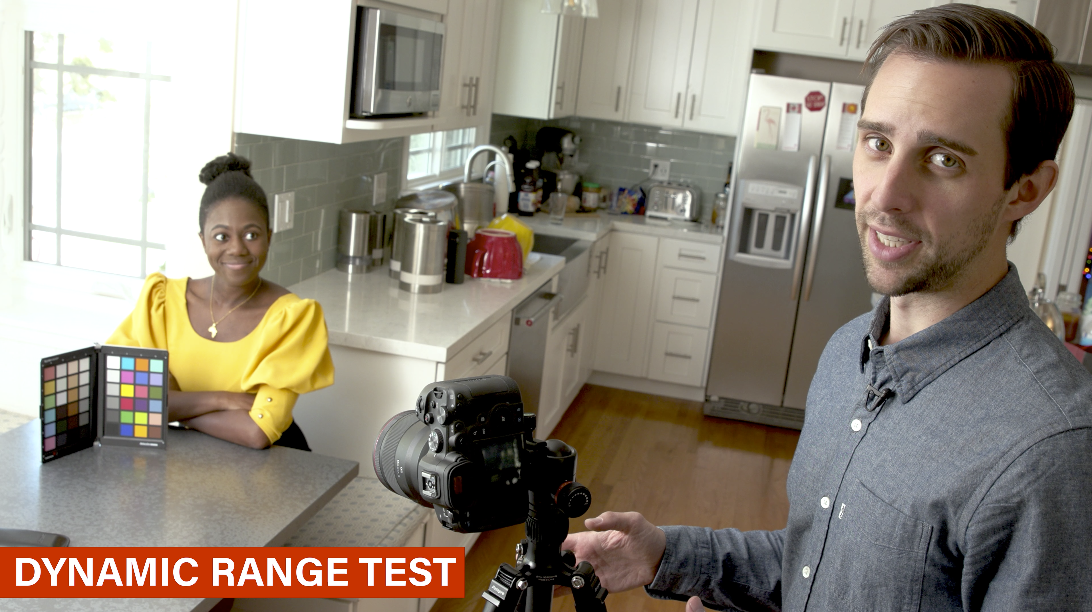 Now we come to my personal favorite test, the dynamic range test. We have Tola here in this window bay area. There are bright highlights in the back out the window. We do have a little bit of light on her face because there wasn’t enough in here before.
Now we come to my personal favorite test, the dynamic range test. We have Tola here in this window bay area. There are bright highlights in the back out the window. We do have a little bit of light on her face because there wasn’t enough in here before. 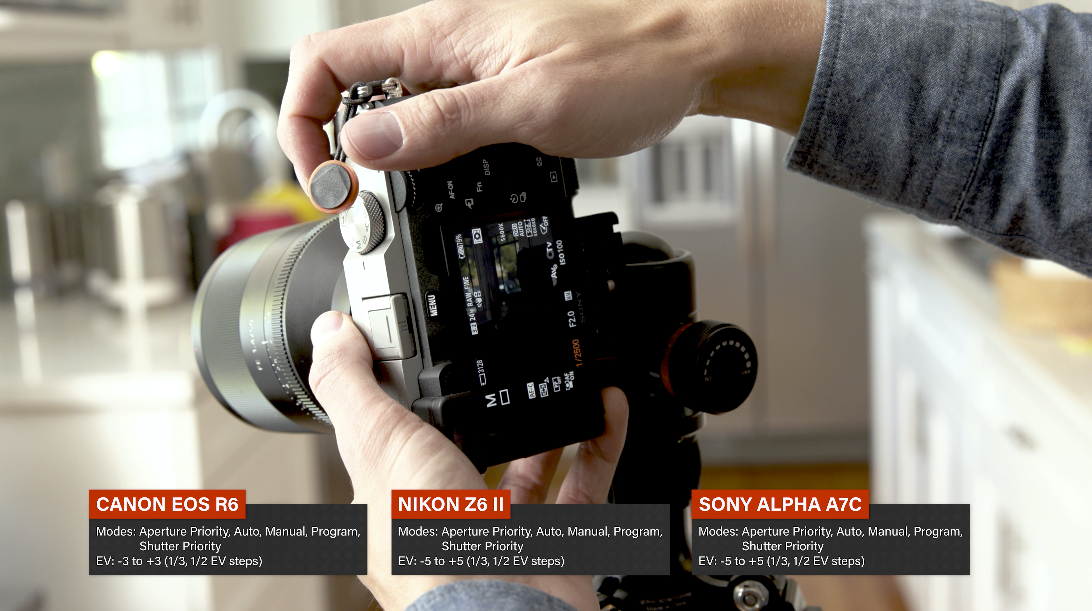 So we’ve accented what’s available just to get a proper baseline exposure. What we’re going to do is underexpose and overexpose by several stops with all three cameras and in post we’ll take those images and process them to bring them back to normal.
So we’ve accented what’s available just to get a proper baseline exposure. What we’re going to do is underexpose and overexpose by several stops with all three cameras and in post we’ll take those images and process them to bring them back to normal.
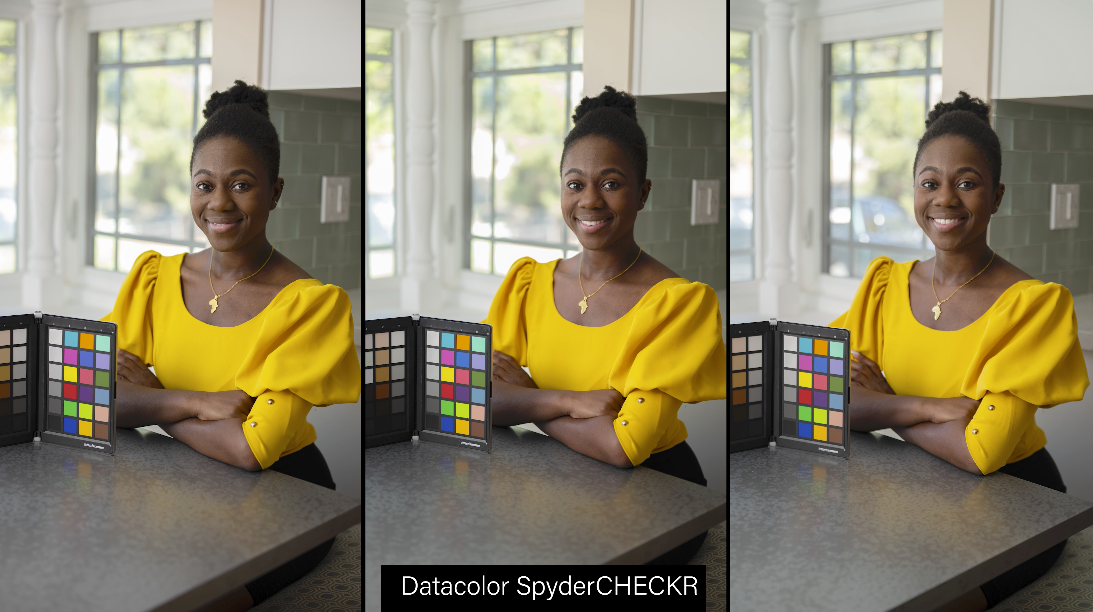 So here’s the dynamic range test. It’s a pretty good example of the fact that you can color correct these sensors to have them match. Kenneth color corrected these. They look almost identical.
So here’s the dynamic range test. It’s a pretty good example of the fact that you can color correct these sensors to have them match. Kenneth color corrected these. They look almost identical.  The Nikon is a little bit warmer than the other two. But they are so close. It shows you that you can correct anything. There are a couple of patches here that were gone, that couldn’t be recovered. But this is a good starting point.
The Nikon is a little bit warmer than the other two. But they are so close. It shows you that you can correct anything. There are a couple of patches here that were gone, that couldn’t be recovered. But this is a good starting point.
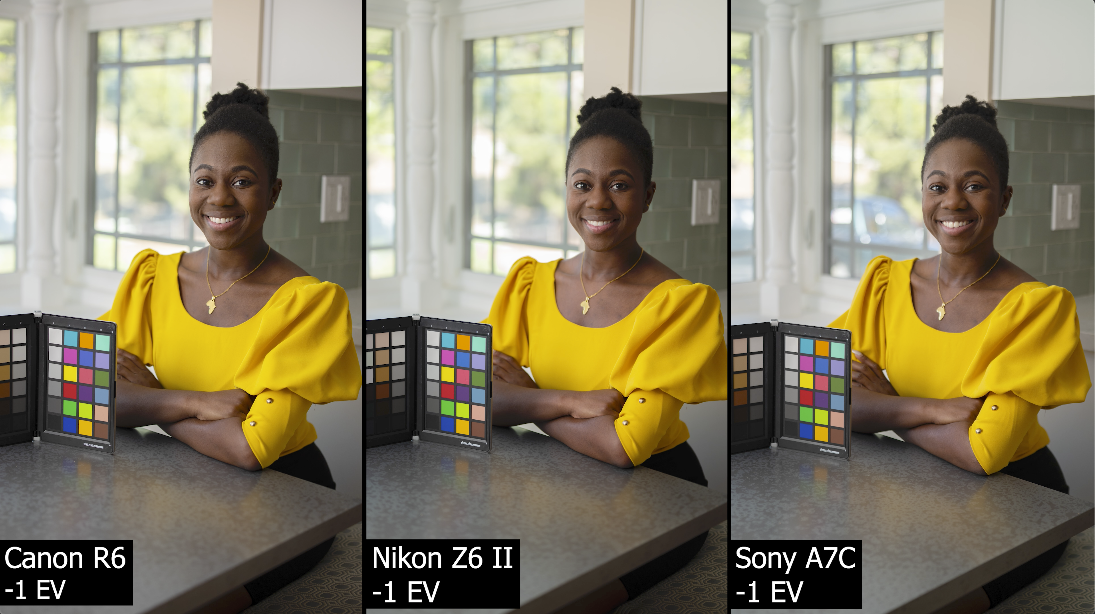 So minus one stop here on all these cameras and already you can see the background and all that information. When you start under exposing what you’re basically doing is giving a correct exposure to the background. It’s going to make it so it holds that information. It’s easy to open the shadows back up and recover it.
So minus one stop here on all these cameras and already you can see the background and all that information. When you start under exposing what you’re basically doing is giving a correct exposure to the background. It’s going to make it so it holds that information. It’s easy to open the shadows back up and recover it.
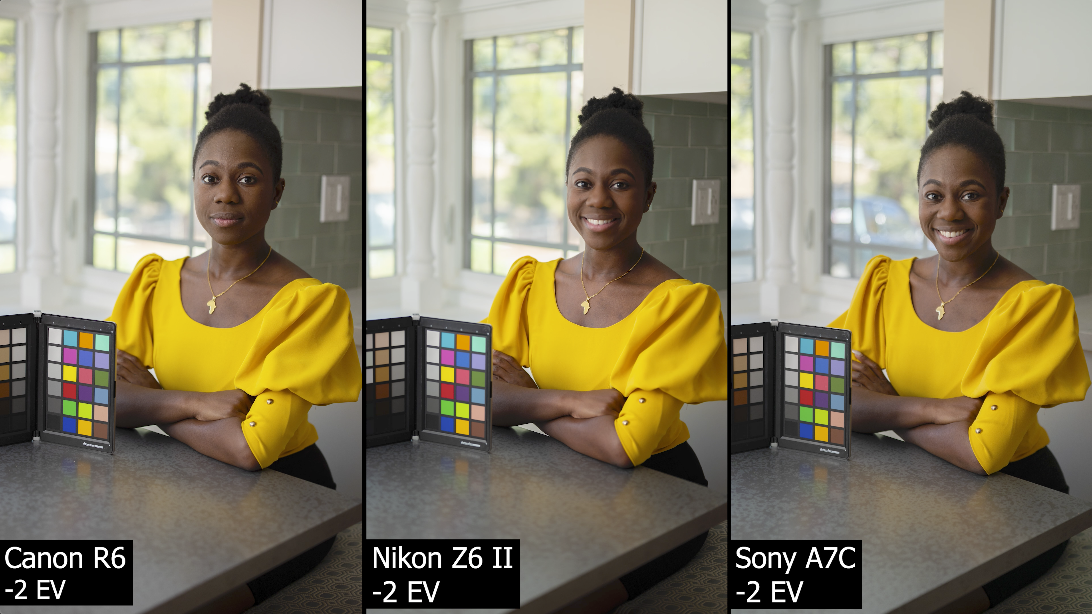 There’s two stops under. All the details are starting to appear in the background.
There’s two stops under. All the details are starting to appear in the background.
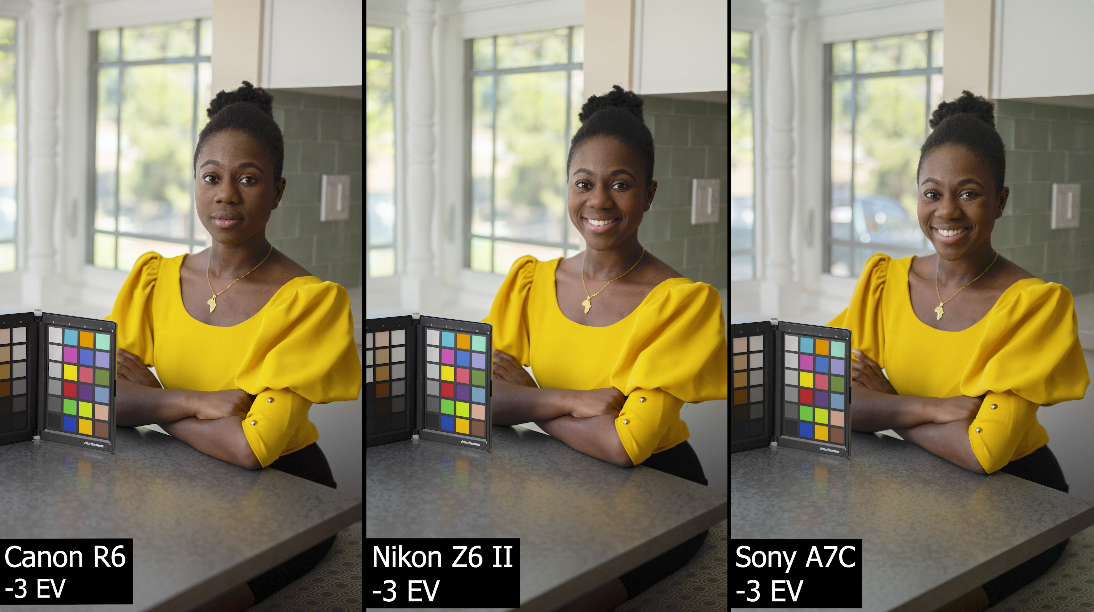 At three stops under we’re not seeing much going on here. This is a really clean image.
At three stops under we’re not seeing much going on here. This is a really clean image.
They have a little bit of a warmth in the shadows, a little bit of redness.
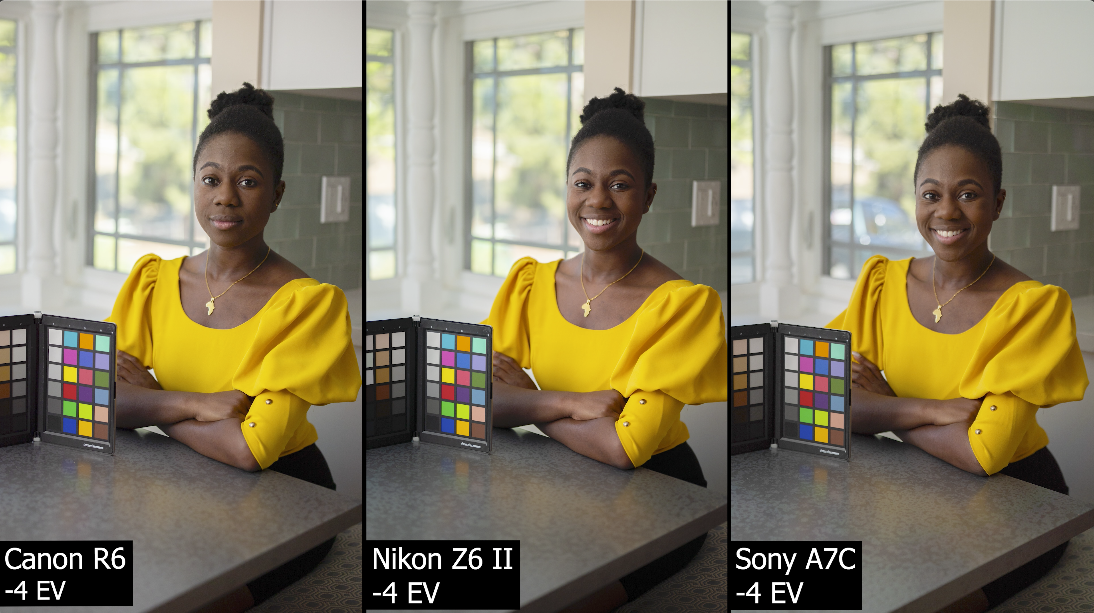 At minus four stops the wall behind her is super dark at this point. The shadow areas in this scene are really dark and this is still super clean on all three cameras.
At minus four stops the wall behind her is super dark at this point. The shadow areas in this scene are really dark and this is still super clean on all three cameras. 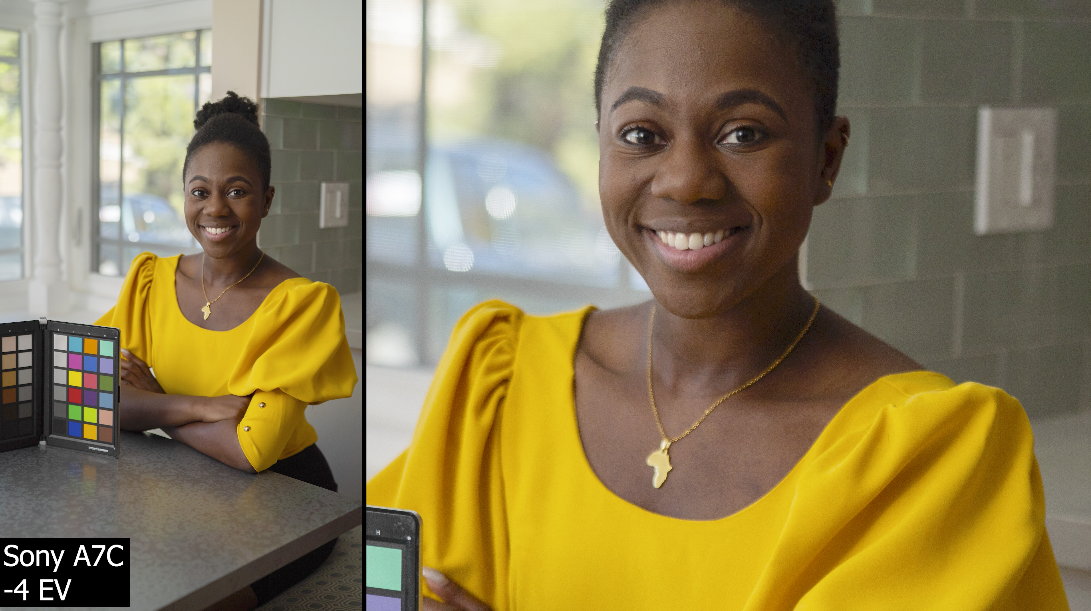
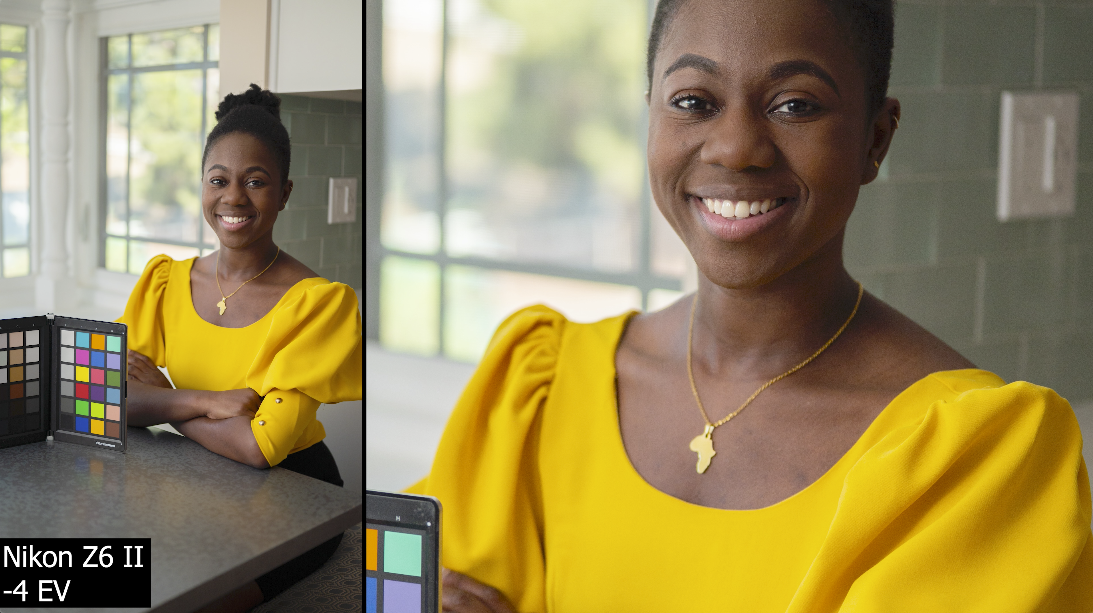
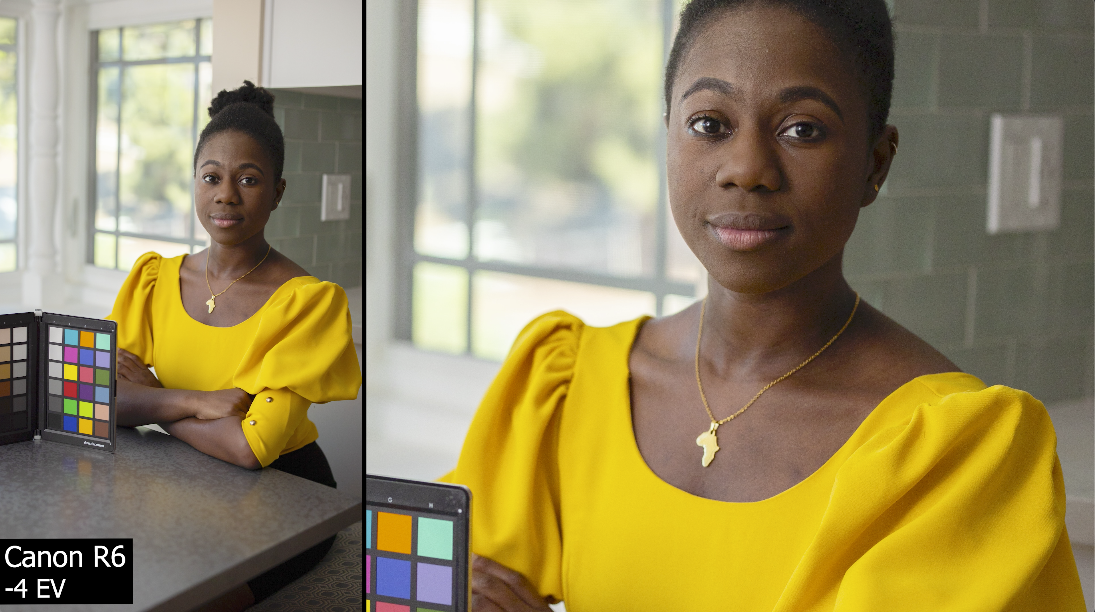 You do see grain and you do see a little splotchiness here on the Sony and magenta and the green swatches are appearing. And we are seeing that on the Nikon a little. The Canon is still super clean.
You do see grain and you do see a little splotchiness here on the Sony and magenta and the green swatches are appearing. And we are seeing that on the Nikon a little. The Canon is still super clean.
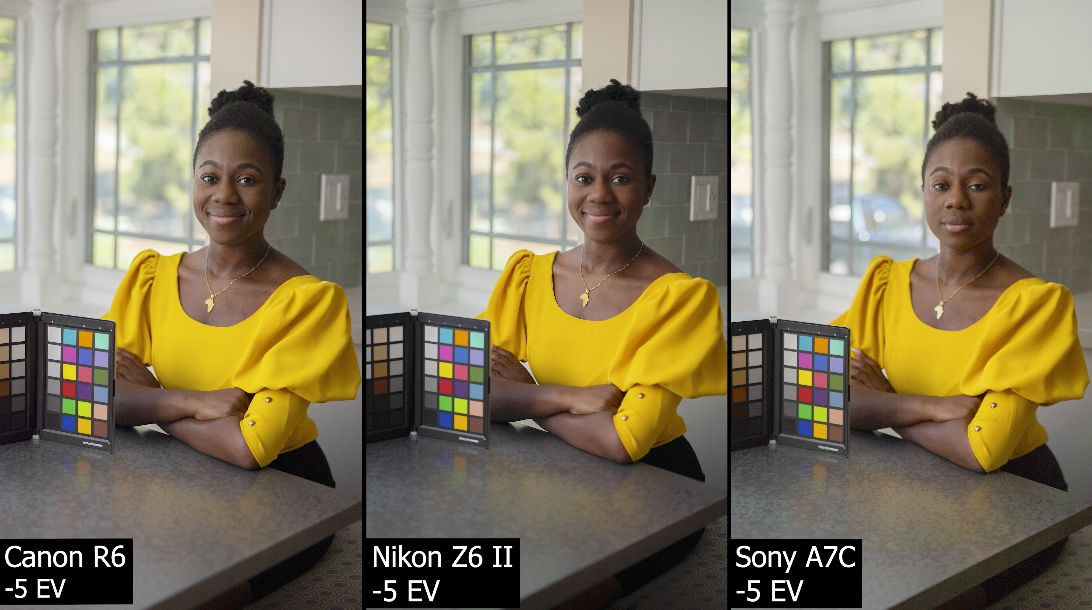 So this is minus five stops. There is at this point a little bit of color shift in the Sony and the Nikon. You’re starting to see a little bit of redness to the skin tones and the backgrounds are going a little green on the Nikon and the Sony. They’re holding together really well for minus five stops and you look at the color chips and it’s all still pretty clean and beautiful with a SpyderCheckr. It looks great. This is a pretty good example of if you’re in a really tough dynamic range situation underexpose by at least two stops. You’re perfectly safe because at five stops it is still usable.
So this is minus five stops. There is at this point a little bit of color shift in the Sony and the Nikon. You’re starting to see a little bit of redness to the skin tones and the backgrounds are going a little green on the Nikon and the Sony. They’re holding together really well for minus five stops and you look at the color chips and it’s all still pretty clean and beautiful with a SpyderCheckr. It looks great. This is a pretty good example of if you’re in a really tough dynamic range situation underexpose by at least two stops. You’re perfectly safe because at five stops it is still usable.
Two stops is going to give you much better detail in the highlights and it’s going to give you a much nicer image.
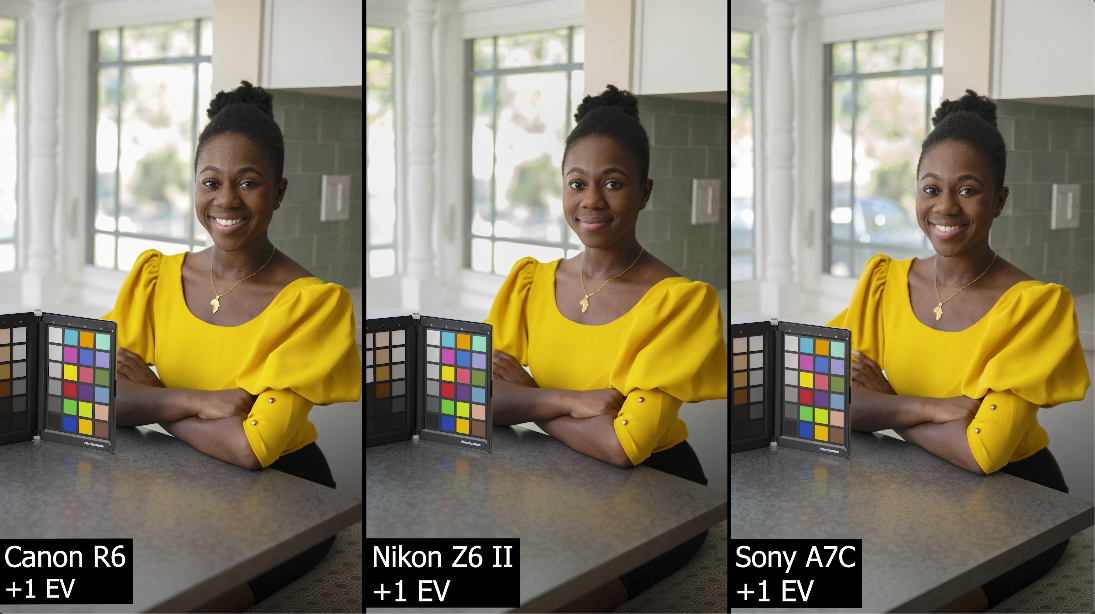 So let’s go to the plus one images for these three cameras and just see how they look. First off there’s a truck parked in the background that was in the Sony image that isn’t on the other two.
So let’s go to the plus one images for these three cameras and just see how they look. First off there’s a truck parked in the background that was in the Sony image that isn’t on the other two. 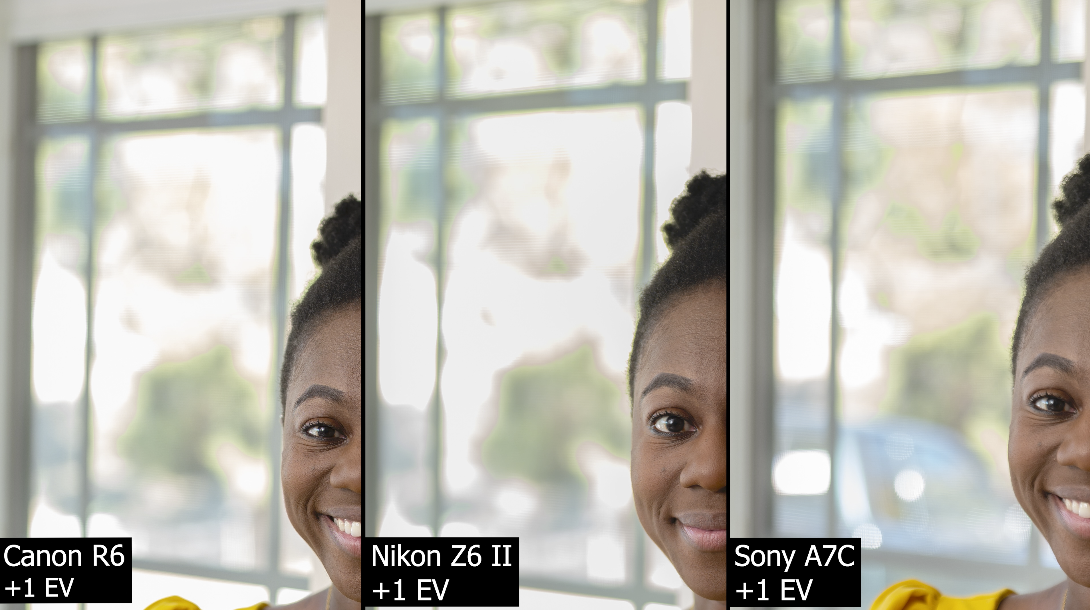 So you can’t look at that. If you look above it you can see that the Sony is still holding the brown tones. The Nikon and Canon are not. The Sony is holding on really well to those highlights. The Nikon and the Canon are about the same. Usually the Nikon blows out much faster than the others.
So you can’t look at that. If you look above it you can see that the Sony is still holding the brown tones. The Nikon and Canon are not. The Sony is holding on really well to those highlights. The Nikon and the Canon are about the same. Usually the Nikon blows out much faster than the others.
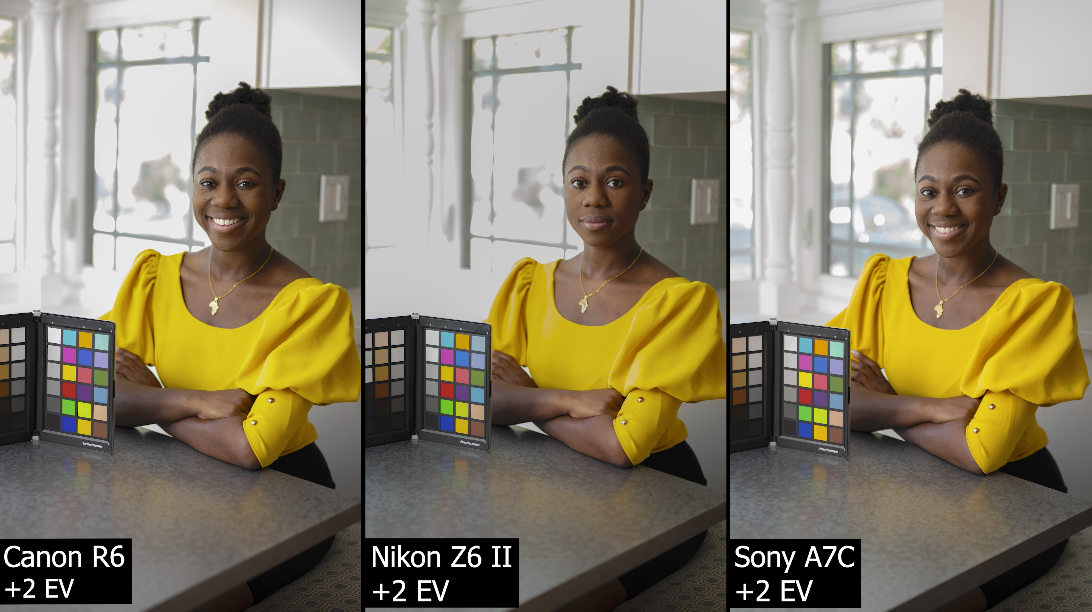 Here we have plus two stops. Wow, we just lose it with the Canon and the Nikon. The Nikon went significantly brighter. The Canon is also a lot brighter. But the Sony is really holding on. It’s holding on for dear life.
Here we have plus two stops. Wow, we just lose it with the Canon and the Nikon. The Nikon went significantly brighter. The Canon is also a lot brighter. But the Sony is really holding on. It’s holding on for dear life.
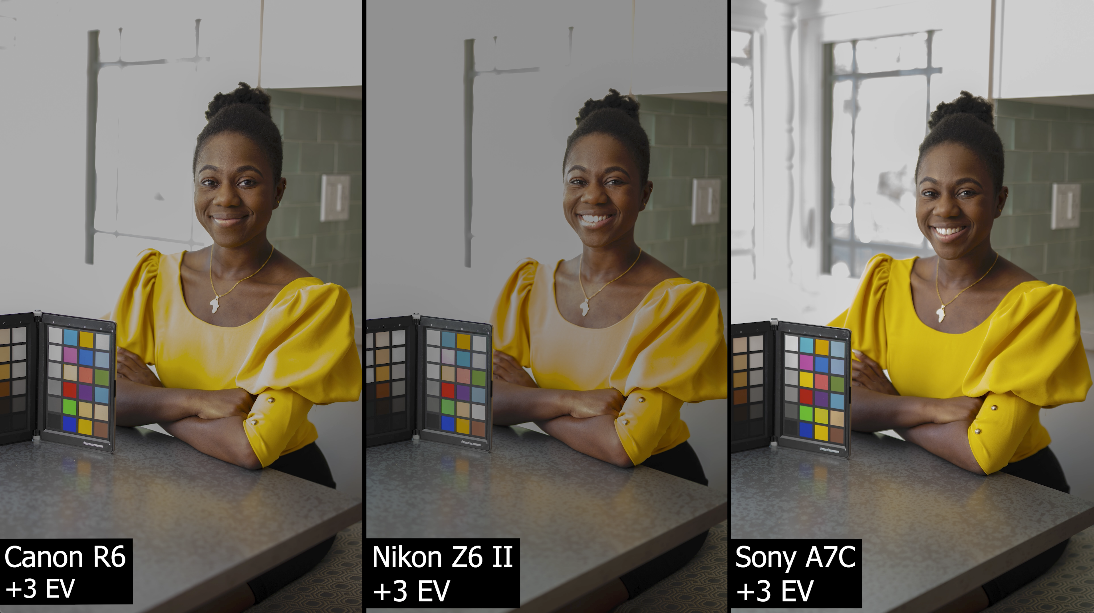 Then we go to plus three and everything behind her is white now for the Canon and Nikon. The Sony still retains some detail on the window detail.
Then we go to plus three and everything behind her is white now for the Canon and Nikon. The Sony still retains some detail on the window detail.
The Sony has at least a stop if not a stop and a half of dynamic range that you don’t see in the Nikon and the Canon.
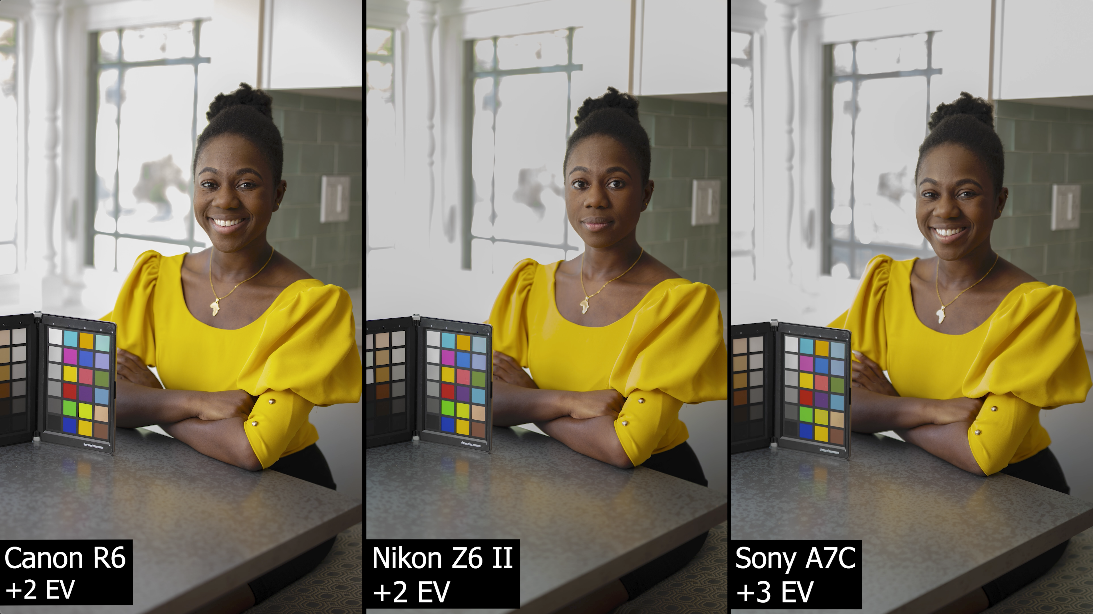 If we go to plus two on the Canon and Nikon and plus three on the Sony they look very similar. So it’s about a stop darker.
If we go to plus two on the Canon and Nikon and plus three on the Sony they look very similar. So it’s about a stop darker.
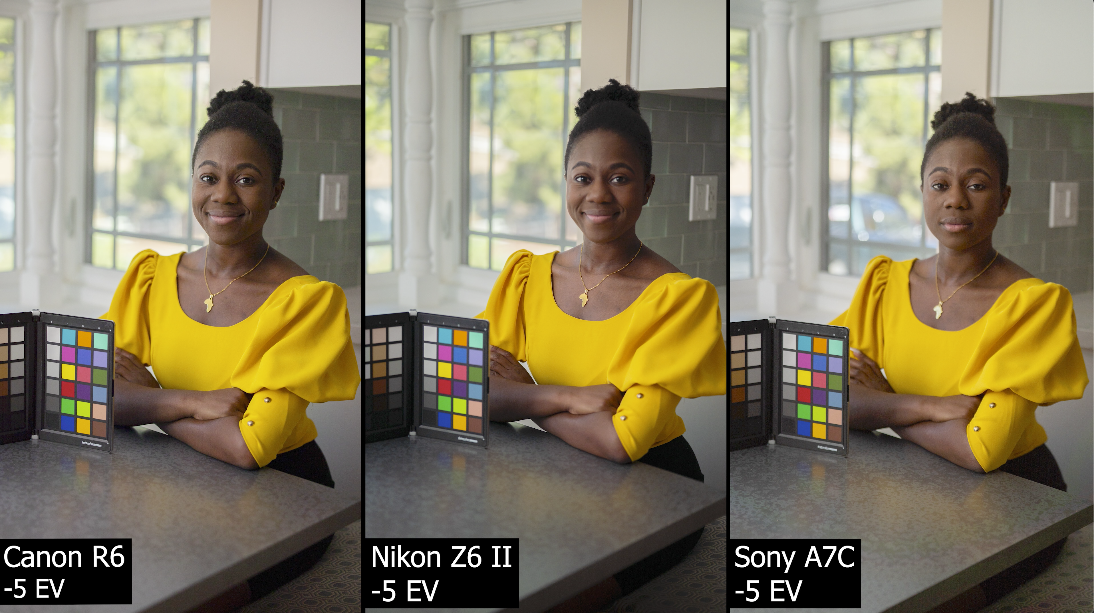 And they were all very similar underexposed down to five stops and the Sony has a stop advantage in the highlights. It really means if you underexpose the Sony by a stop, you’re going to have tremendous detail in those highlights. It is going to help you hold the highlights in a really tough situation where you have bright highlights and dark shadows.
And they were all very similar underexposed down to five stops and the Sony has a stop advantage in the highlights. It really means if you underexpose the Sony by a stop, you’re going to have tremendous detail in those highlights. It is going to help you hold the highlights in a really tough situation where you have bright highlights and dark shadows.
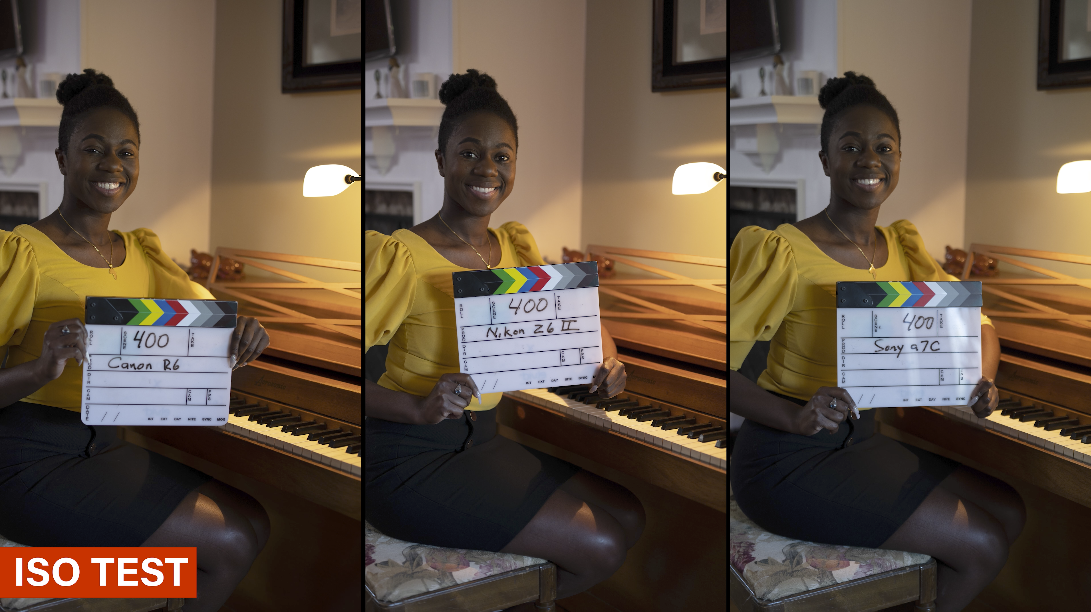 Alright, here’s the ISO test and we started here at 400 ISO. We have a mixed lighting situation. So she has the warm light from the piano light.
Alright, here’s the ISO test and we started here at 400 ISO. We have a mixed lighting situation. So she has the warm light from the piano light. 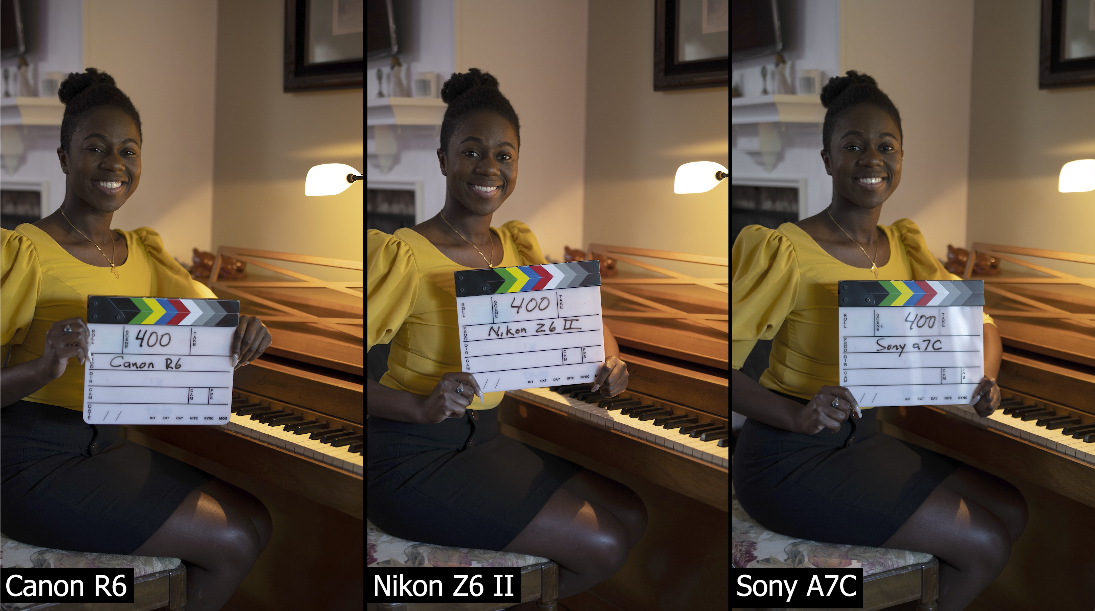 And then we have a little bit of window light coming through the doorway and then we put a little bit of daylight behind her in the room. We started 400 ISO and they’re pretty clean.
And then we have a little bit of window light coming through the doorway and then we put a little bit of daylight behind her in the room. We started 400 ISO and they’re pretty clean. 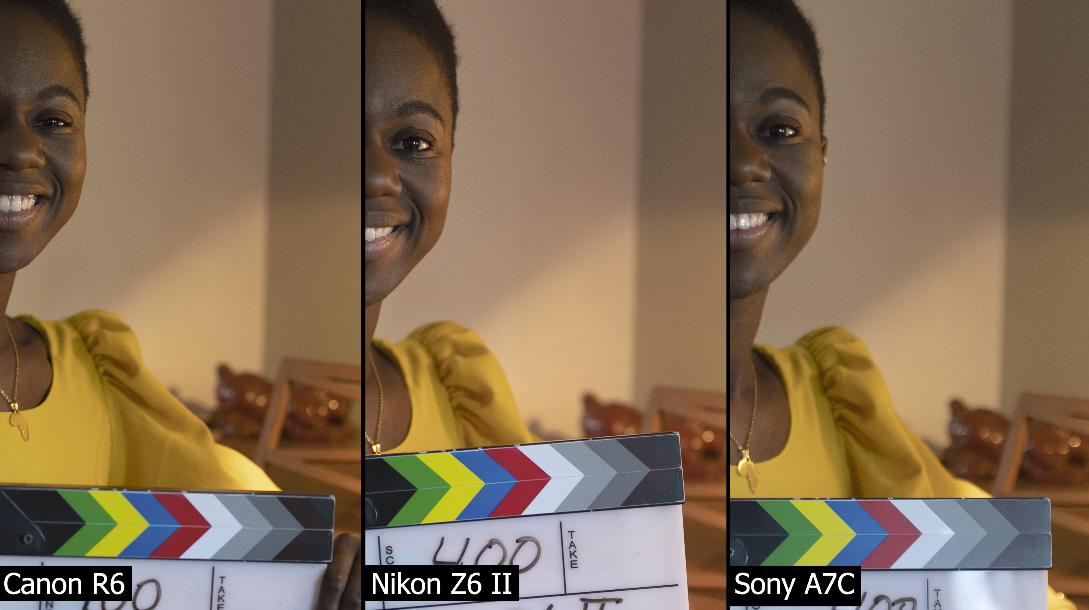 If you blow them up they are really clean. Boy with noise reduction, these would be perfect. They are all pretty clean.
If you blow them up they are really clean. Boy with noise reduction, these would be perfect. They are all pretty clean.
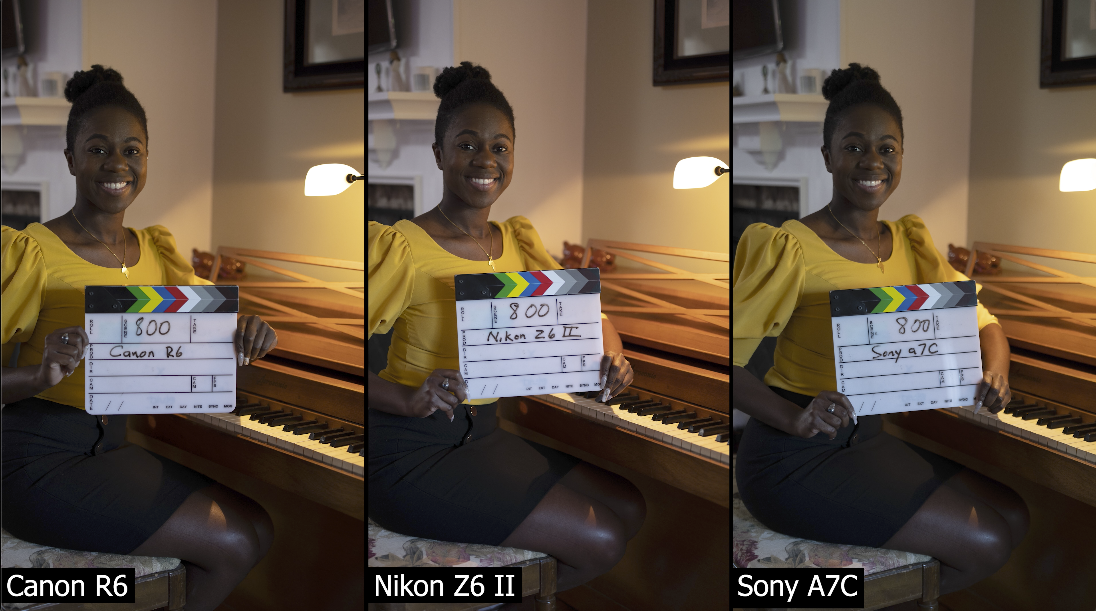 If we go to 800 ISO they are still very nice clean images.
If we go to 800 ISO they are still very nice clean images. 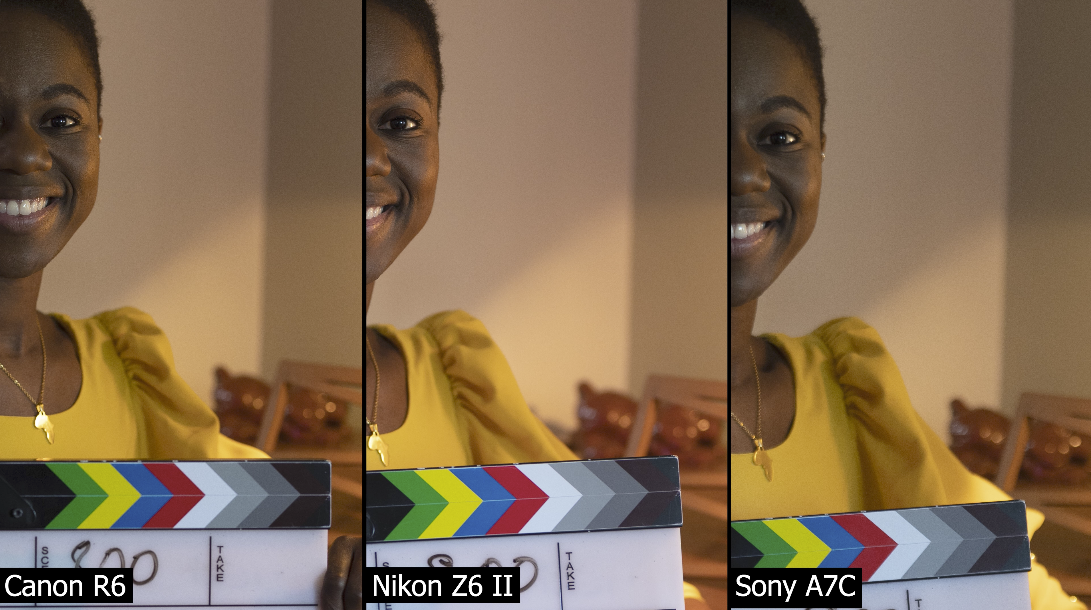 You do see a little noise in the background on the wall behind her head.
You do see a little noise in the background on the wall behind her head. 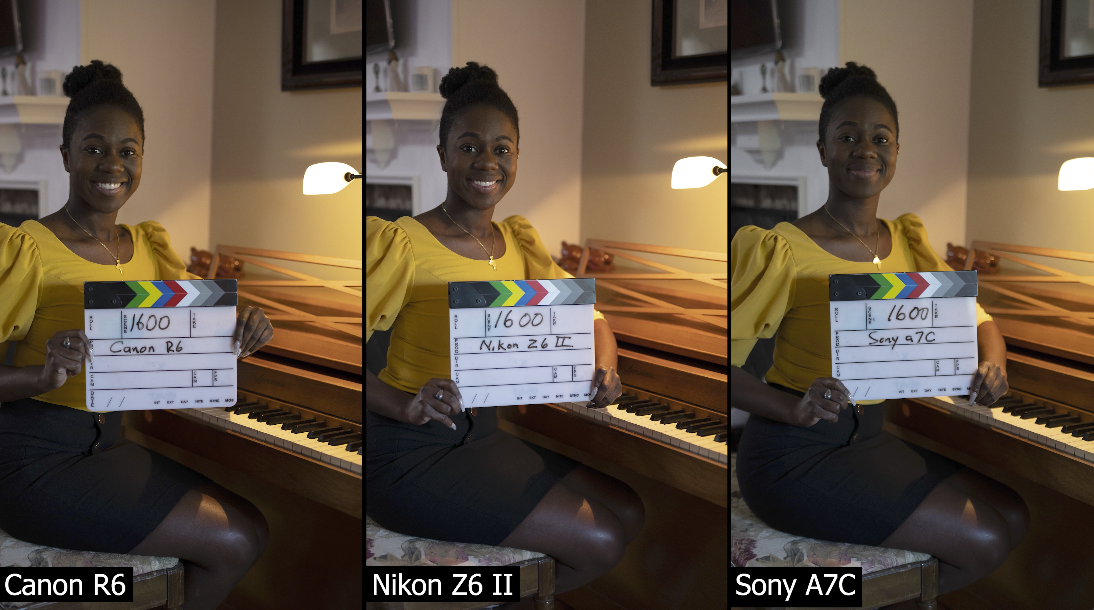 At 1600 ISO we definitely start to see the noise. It’s present but it’s not terrible and you could easily get rid of that with noise reduction.
At 1600 ISO we definitely start to see the noise. It’s present but it’s not terrible and you could easily get rid of that with noise reduction. 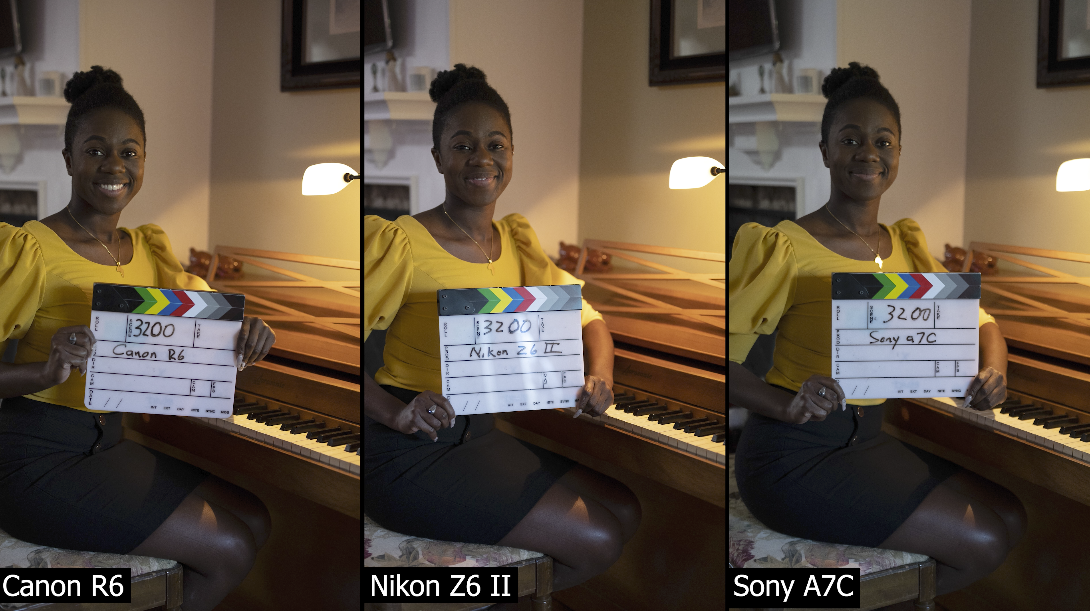 3200 ISO is usually where this price bracket breaks. You spent all the money you can afford on ISO and you don’t get great 3200.
3200 ISO is usually where this price bracket breaks. You spent all the money you can afford on ISO and you don’t get great 3200. 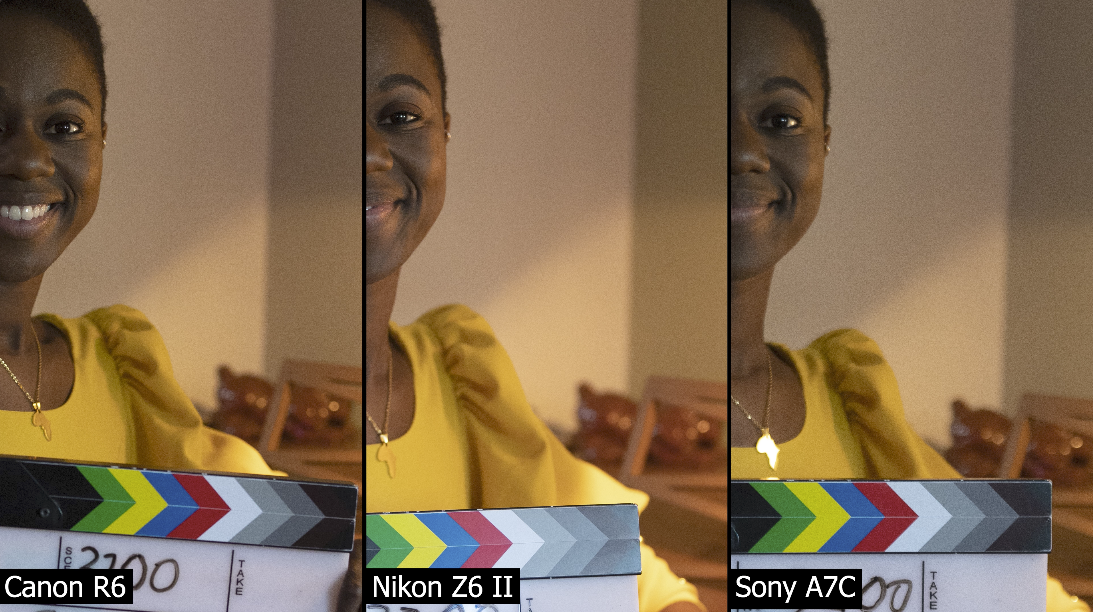 If you blew this up to an 8 by 10 you would probably be able to see some of the texture back there. The Sony is a little more grainy but the Canon looks really clean. I’d say the Canon looks a little better than the Nikon.
If you blew this up to an 8 by 10 you would probably be able to see some of the texture back there. The Sony is a little more grainy but the Canon looks really clean. I’d say the Canon looks a little better than the Nikon.
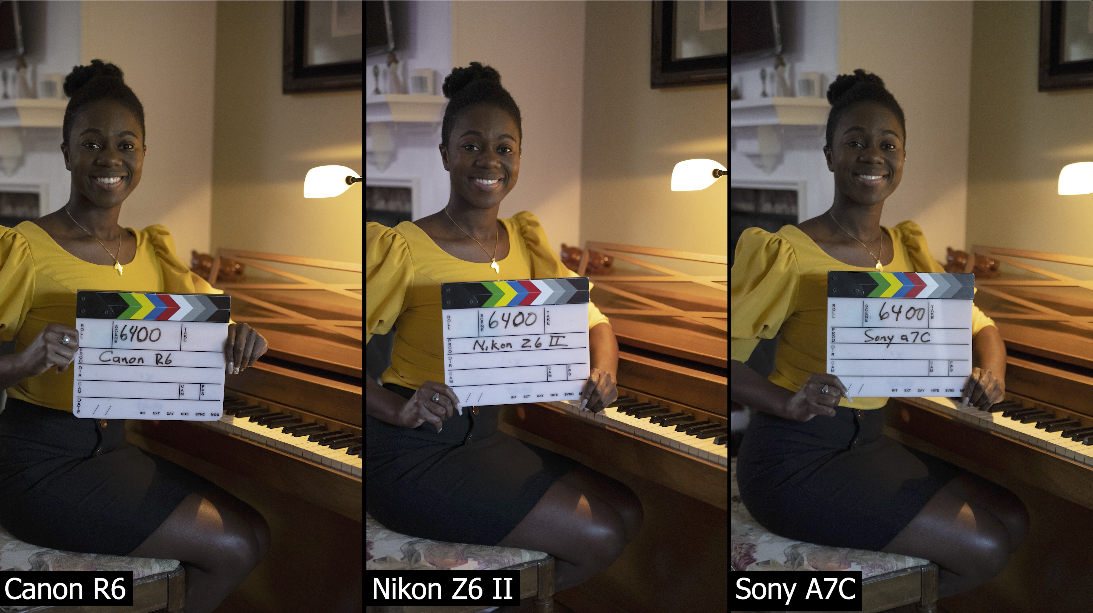 At 6400 they’re getting a little gritty. The Canon is definitely pulling ahead and Nikon is holding its own. And the Sony is struggling. You see the grain pattern now all through her face.
At 6400 they’re getting a little gritty. The Canon is definitely pulling ahead and Nikon is holding its own. And the Sony is struggling. You see the grain pattern now all through her face.
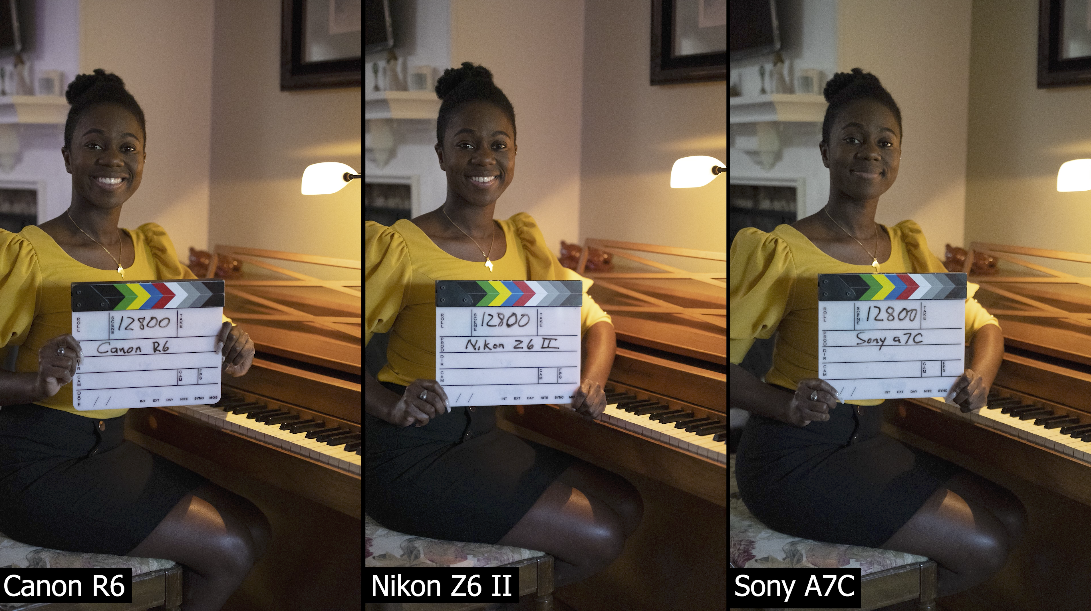 12,800 ISO is really noisy at this point. I probably would avoid shooting the high. What’s interesting about them is, in the past we have always seen digital noise. You get those kind of reds and greens start to build especially at 12,800. I’m not seeing that here. I’m seeing a grain build but I’m not seeing the color start to fall apart. But you definitely seen the grain pattern, especially the Sony.
12,800 ISO is really noisy at this point. I probably would avoid shooting the high. What’s interesting about them is, in the past we have always seen digital noise. You get those kind of reds and greens start to build especially at 12,800. I’m not seeing that here. I’m seeing a grain build but I’m not seeing the color start to fall apart. But you definitely seen the grain pattern, especially the Sony.
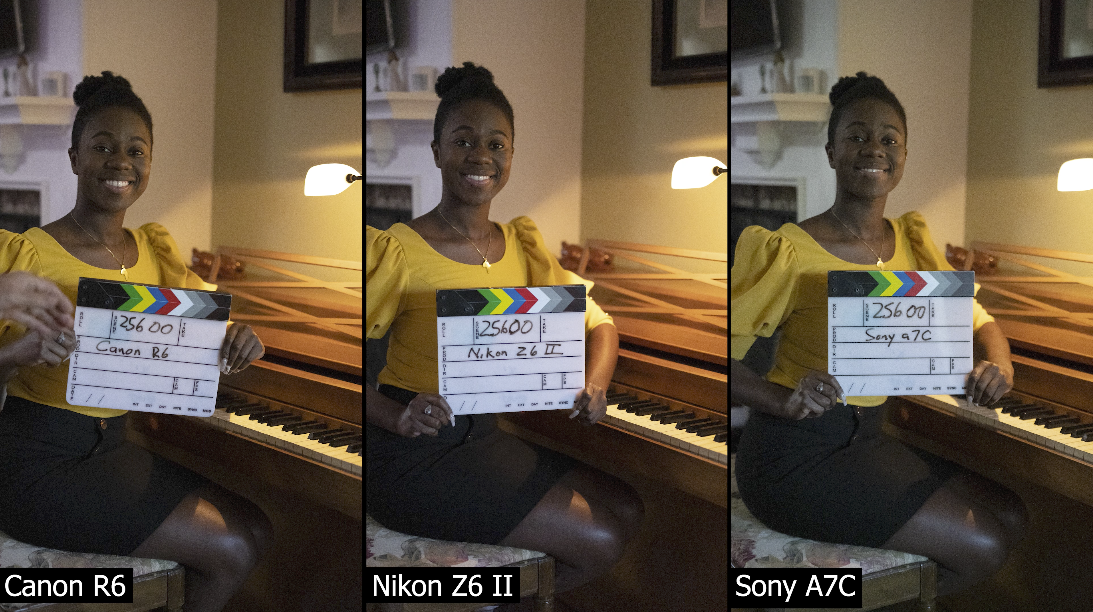 At 25,600 the Sony is really gritty. The Nikon is okay. If you were shooting a wedding and it’s really dark I would go to 25,600. It’s better to have an emotional shot and have the images than not at all.
At 25,600 the Sony is really gritty. The Nikon is okay. If you were shooting a wedding and it’s really dark I would go to 25,600. It’s better to have an emotional shot and have the images than not at all. 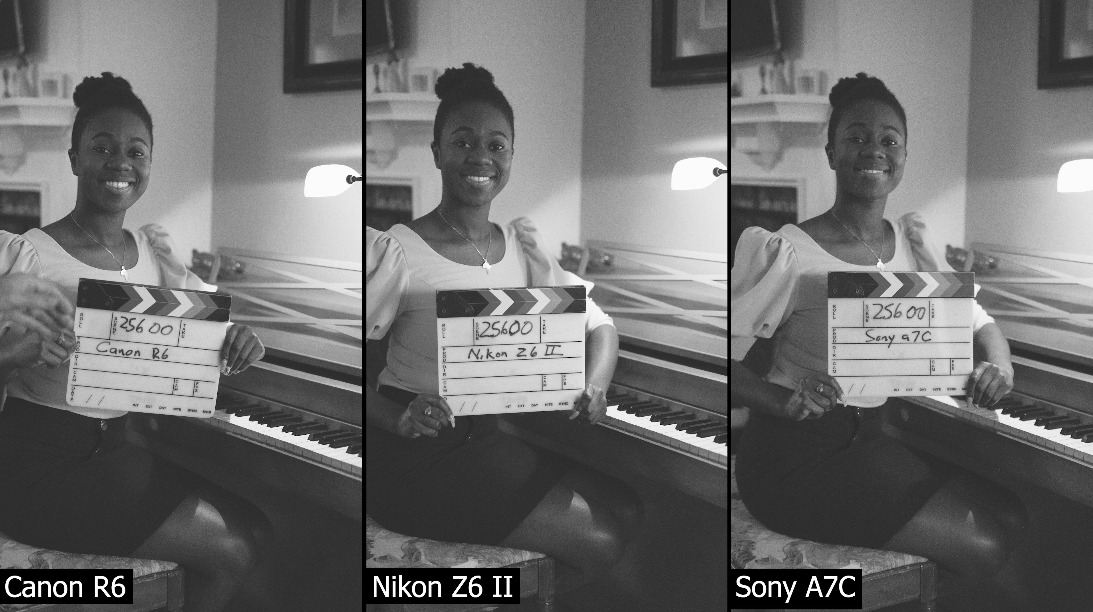 And if you turn these black and white now it’s cool and artistic. I do feel like the Canon has about almost a stop on the Sony. The Nikon is looking the same as the Sony.
And if you turn these black and white now it’s cool and artistic. I do feel like the Canon has about almost a stop on the Sony. The Nikon is looking the same as the Sony.
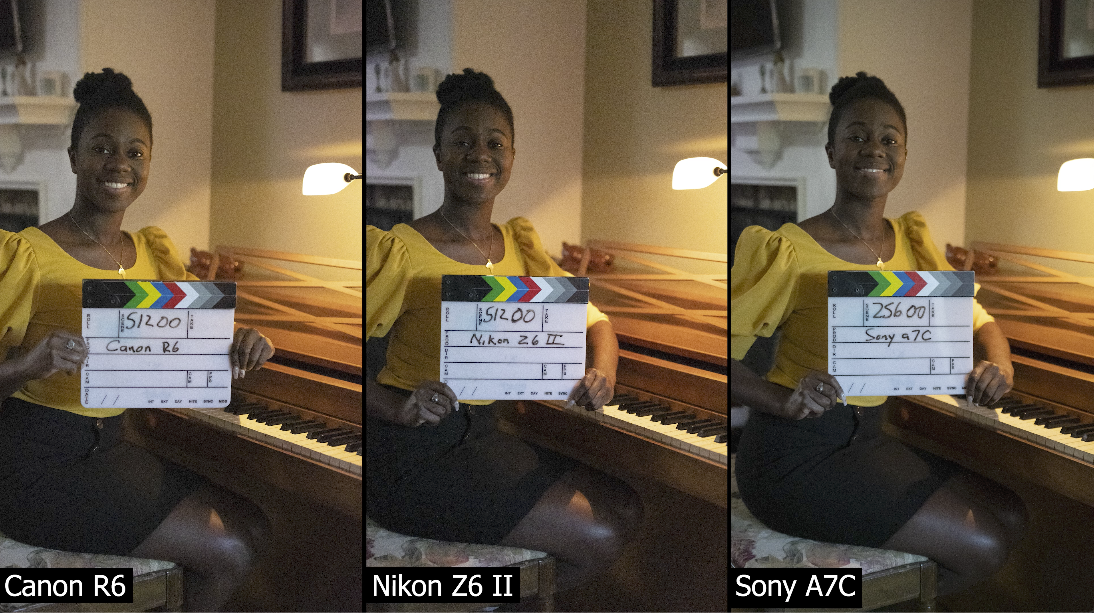 At 51,200 the Sony doesn’t go up this high. The Canon and the Nikon do go another stop because they can. And they are still kind of okay.
At 51,200 the Sony doesn’t go up this high. The Canon and the Nikon do go another stop because they can. And they are still kind of okay.
Wow these are very impressive cameras. Especially at this price point. These are not the most expensive high end cameras from these different manufacturer lines. I’m pretty impressed with where they are at.
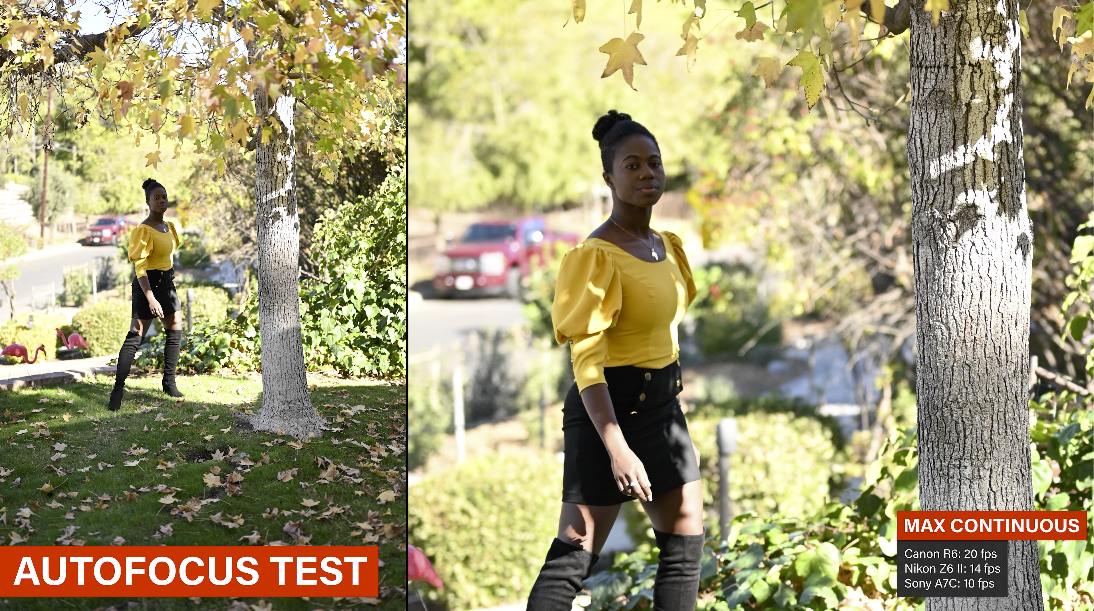 The autofocus was interesting because the Nikon has a new processor and we expected it to perform better than the first one.
The autofocus was interesting because the Nikon has a new processor and we expected it to perform better than the first one. 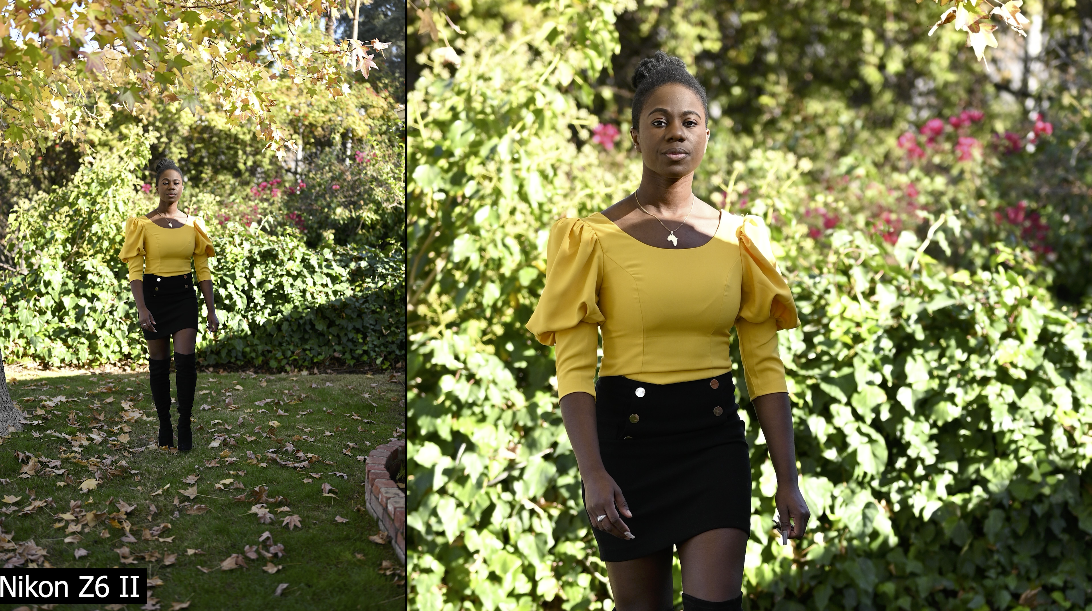 I was excited for the Mark II and I thought this was going to be a real knockout with the autofocus because Nikon is traditionally very good with their autofocus systems. Especially with the D850 the D780. I mean, they’re legendary. I was not super impressed with this Nikon. The lag, it had a really hard time keeping up. At its best it did capture sharp images most of the time. It missed a few here and there. But it did pretty well.
I was excited for the Mark II and I thought this was going to be a real knockout with the autofocus because Nikon is traditionally very good with their autofocus systems. Especially with the D850 the D780. I mean, they’re legendary. I was not super impressed with this Nikon. The lag, it had a really hard time keeping up. At its best it did capture sharp images most of the time. It missed a few here and there. But it did pretty well.
 The Canon R6 just knocked it out of the park. The R6 performed so well. The R6 was better than the R5 when we tested it. The R6 was right on about every time and tracking.
The Canon R6 just knocked it out of the park. The R6 performed so well. The R6 was better than the R5 when we tested it. The R6 was right on about every time and tracking.
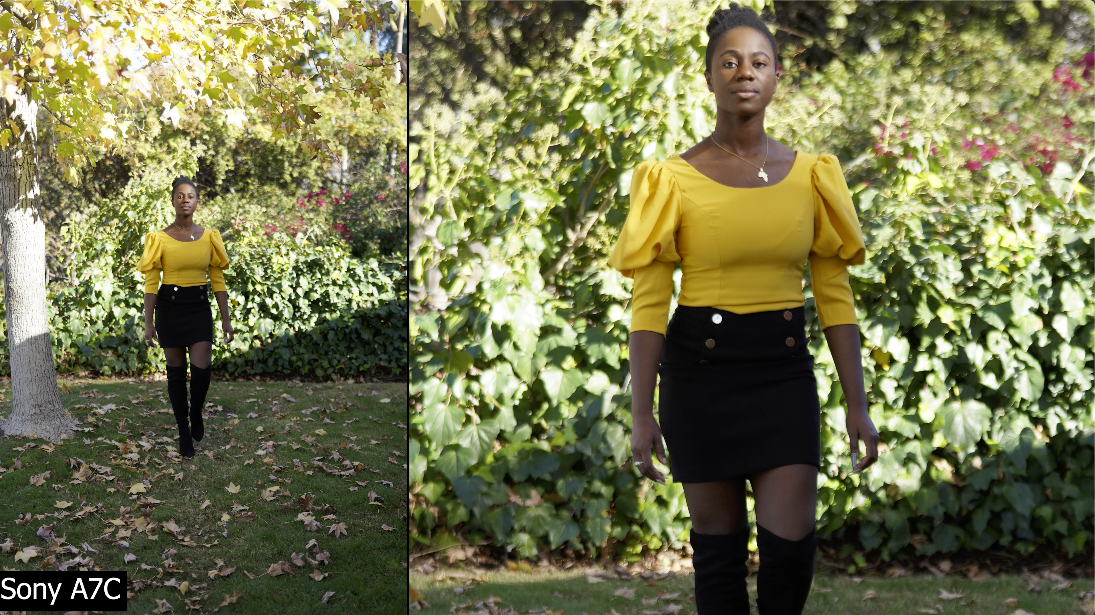 The Sony did really well. It had a few softer images, but was a really solid performer. So really, to wrap this up, I feel like the R6 was stellar and was probably the best in the autofocus test.
The Sony did really well. It had a few softer images, but was a really solid performer. So really, to wrap this up, I feel like the R6 was stellar and was probably the best in the autofocus test. 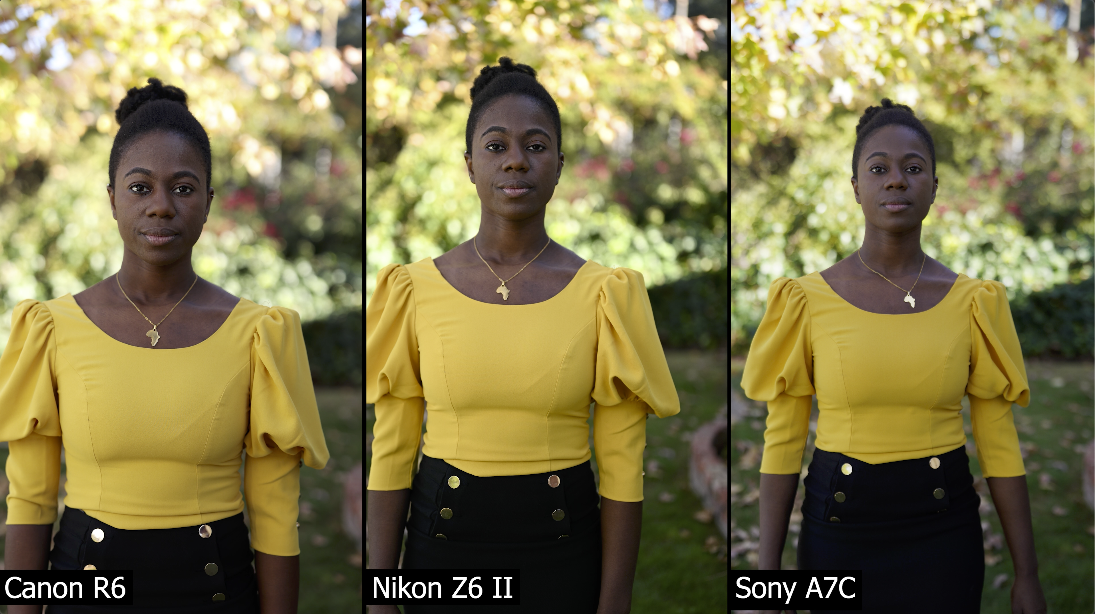 And then I think next would be the Sony which was a really good solid contender. The Nikon kind of struggled and had a hard time.
And then I think next would be the Sony which was a really good solid contender. The Nikon kind of struggled and had a hard time.
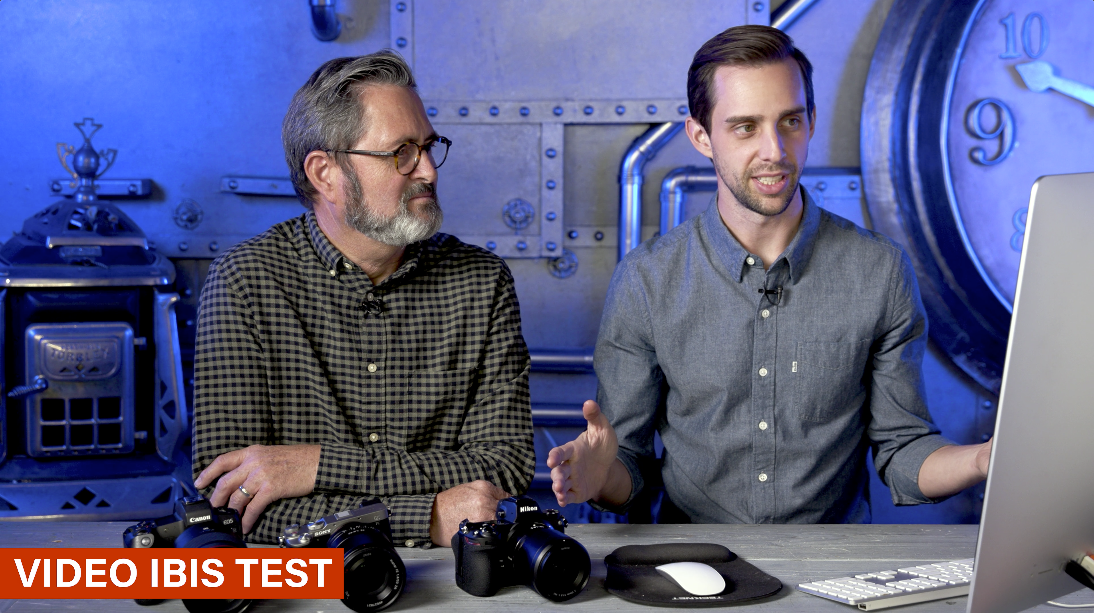 We also shot some video, because video is a big feature, of course on all these cameras. And there’s one other thing we should mention that is IBIS. Because this is kind of a big deal these days. It is a major big deal. And we want to see how it compares.
We also shot some video, because video is a big feature, of course on all these cameras. And there’s one other thing we should mention that is IBIS. Because this is kind of a big deal these days. It is a major big deal. And we want to see how it compares. 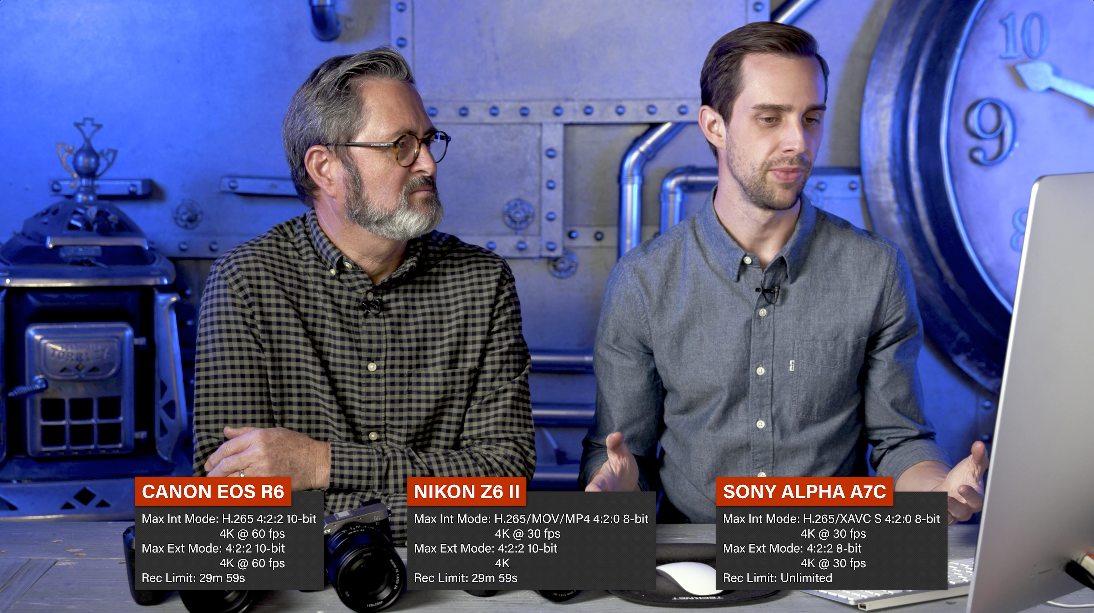 So we shot the video test handheld so we could see how the IBIS performs. The one in the upper left hand corner is way more stable than anything else. I mean it is pretty rock solid. Yeah, so I’m thinking that’s the Canon. Yes it is.
So we shot the video test handheld so we could see how the IBIS performs. The one in the upper left hand corner is way more stable than anything else. I mean it is pretty rock solid. Yeah, so I’m thinking that’s the Canon. Yes it is.
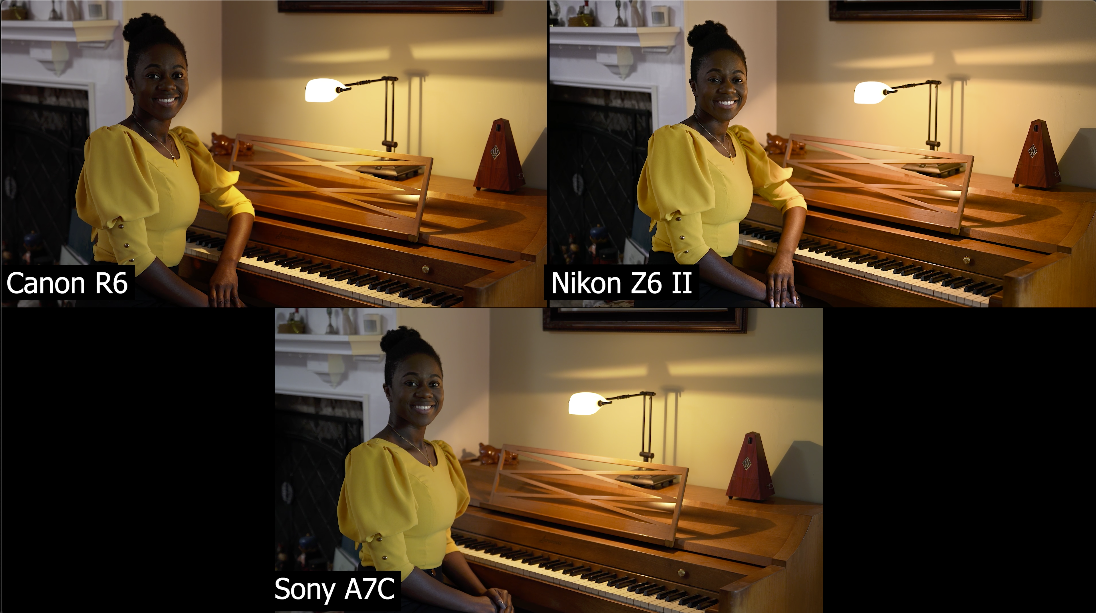 And then the next one on the right has to be the Nikon. Yep, it’s pretty solid, too. But the Sony is
And then the next one on the right has to be the Nikon. Yep, it’s pretty solid, too. But the Sony is
drifting all over. I was holding it as steady as I could. Of course there is going to be some shake just because I’m a human. I think it’s just the newer the technology the better. 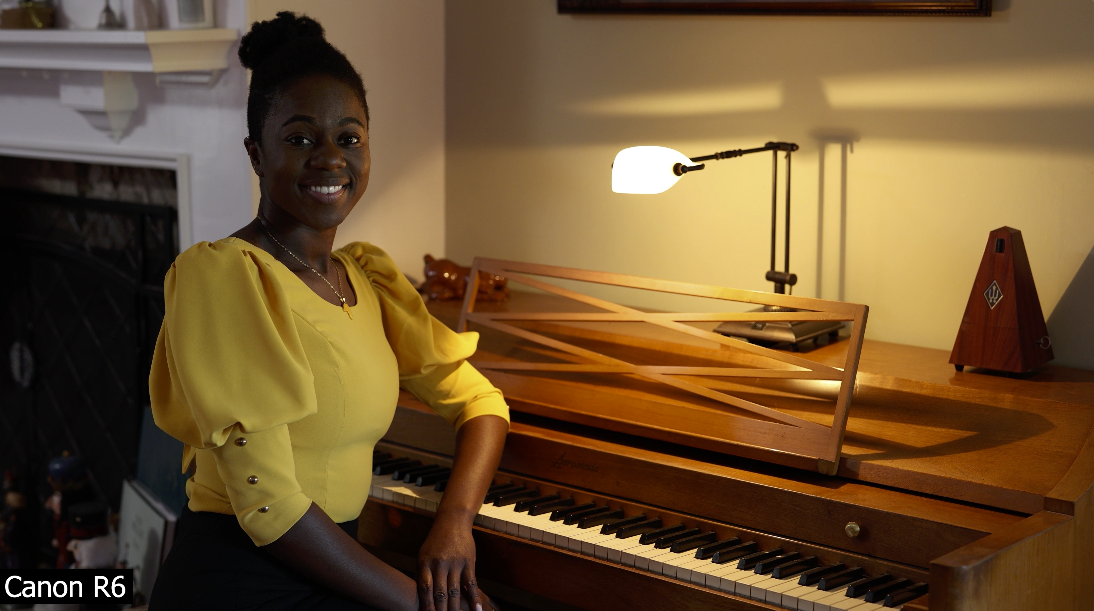 The Canon R6 has brand new IBIS technology. It’s rated for six and a half stops.
The Canon R6 has brand new IBIS technology. It’s rated for six and a half stops. 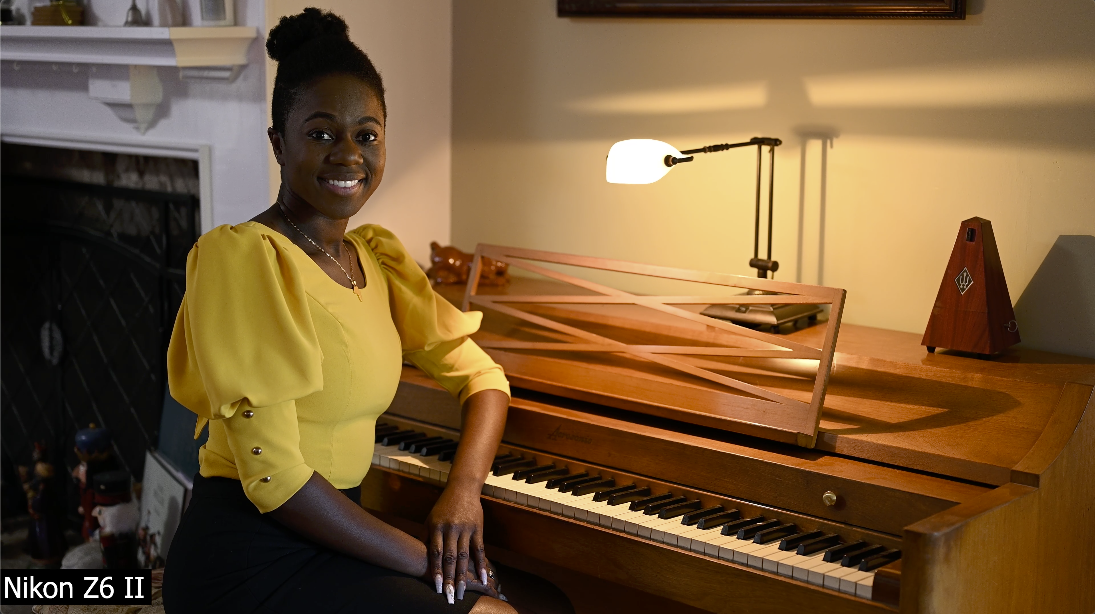 The Nikon is also rated for six stops yet you’ll see there’s a certain jitteriness to it.
The Nikon is also rated for six stops yet you’ll see there’s a certain jitteriness to it. 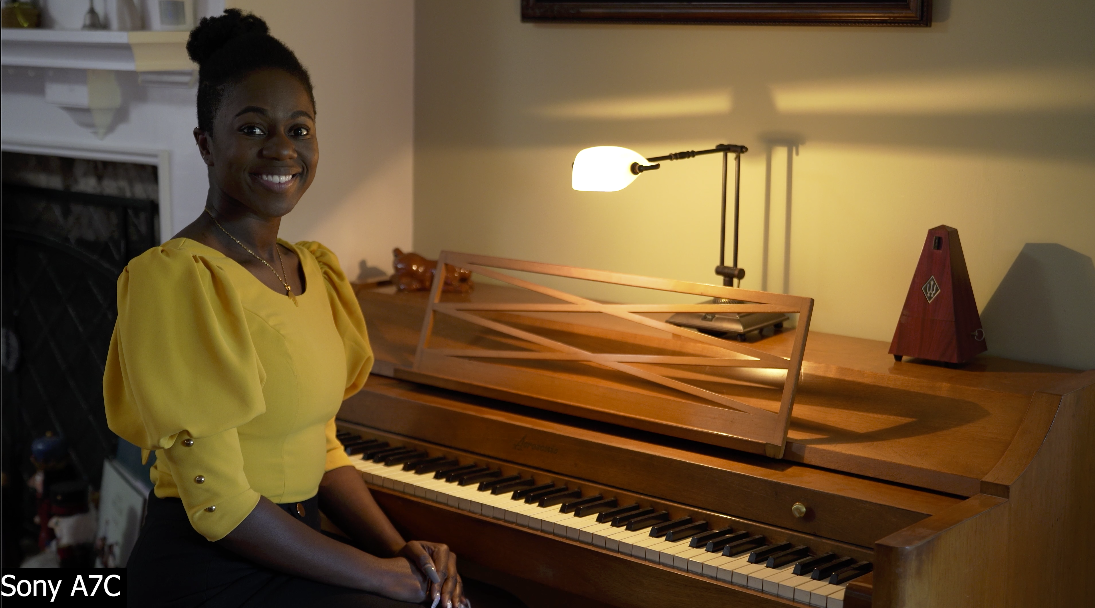 With the Sony you can see that it does just kind of drift a little bit. The R6 doesn’t have the 4K HQ setting just the IPB 4K. It looks really nice, it’s sharp and it’s clean. We didn’t shoot log on these because we figured there are going to be a lot of other log tests out there and that’s not what we want to dive into today. But it looks sharp and it looks clean. I don’t see much banding or anything that might become more of an issue if you shoot in the log profile and try and correct it.
With the Sony you can see that it does just kind of drift a little bit. The R6 doesn’t have the 4K HQ setting just the IPB 4K. It looks really nice, it’s sharp and it’s clean. We didn’t shoot log on these because we figured there are going to be a lot of other log tests out there and that’s not what we want to dive into today. But it looks sharp and it looks clean. I don’t see much banding or anything that might become more of an issue if you shoot in the log profile and try and correct it.
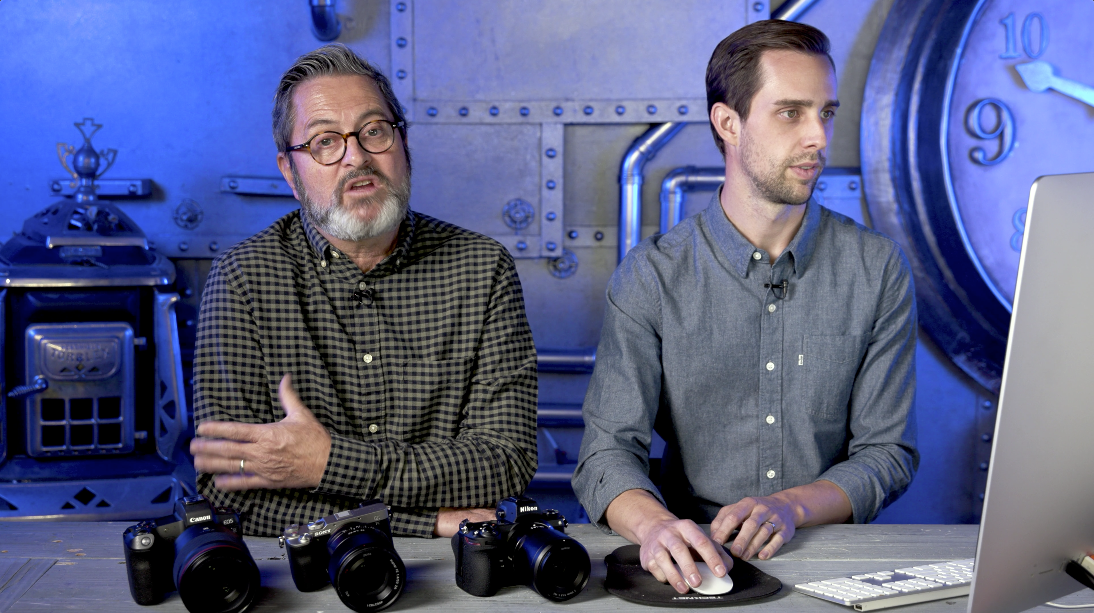 The Nikon looks super clean. It looks a little sharpened to me, which I didn’t go in and check and make sure there was no sharpening. Maybe there’s something that you could turn off there.
The Nikon looks super clean. It looks a little sharpened to me, which I didn’t go in and check and make sure there was no sharpening. Maybe there’s something that you could turn off there.
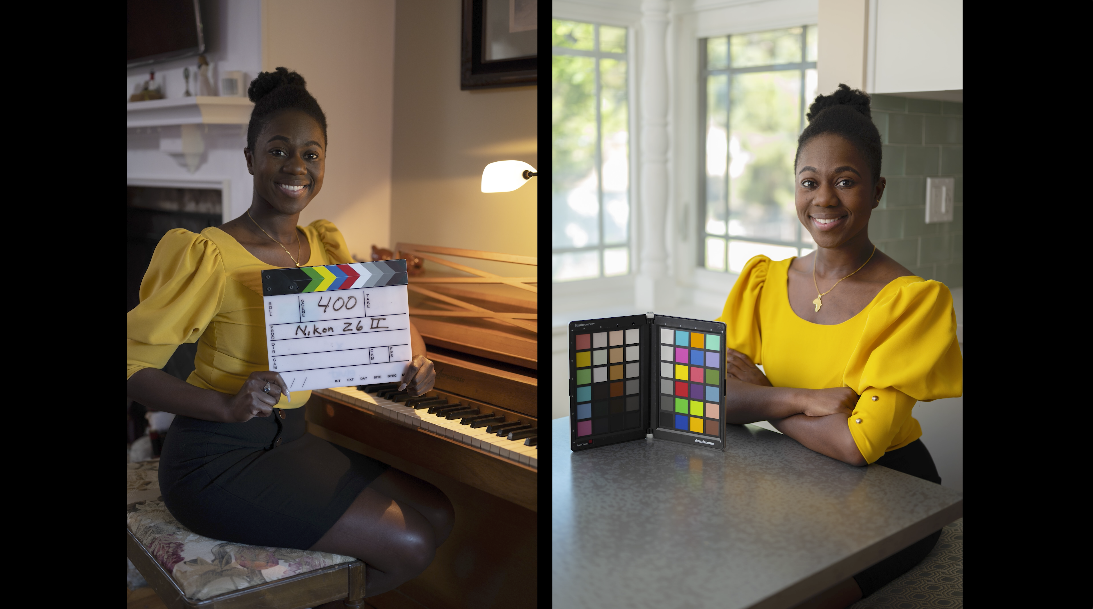 The Sony, as is kind of typical for them, is a little bit green. You see the green in the front of her face. And the image overall is a little softer. I feel like this to me feels like it has no sharpening applied. You know you could sharpen that up really easily with an effect.
The Sony, as is kind of typical for them, is a little bit green. You see the green in the front of her face. And the image overall is a little softer. I feel like this to me feels like it has no sharpening applied. You know you could sharpen that up really easily with an effect.
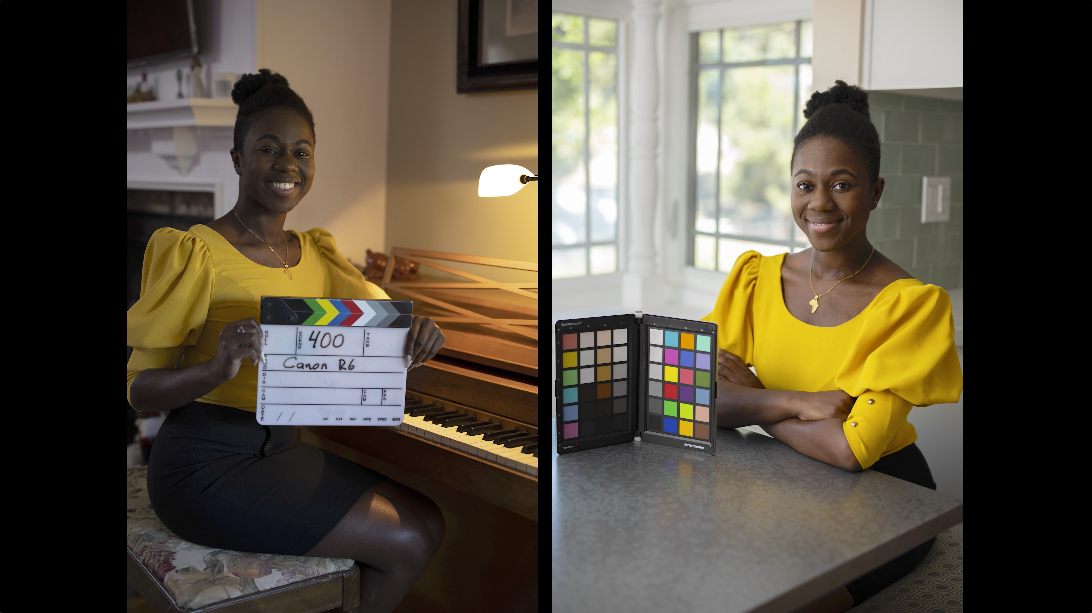 You can’t make this comparison without having this conversation. I put the R6 up and just turned it on while I was cooking one night and I ran through a 29 minute clip no problem. Then I started the second 29 minute clip and 15 minutes into it, it overheated. It didn’t shut the camera down, just the overheat warming on the R6 came up.
You can’t make this comparison without having this conversation. I put the R6 up and just turned it on while I was cooking one night and I ran through a 29 minute clip no problem. Then I started the second 29 minute clip and 15 minutes into it, it overheated. It didn’t shut the camera down, just the overheat warming on the R6 came up. 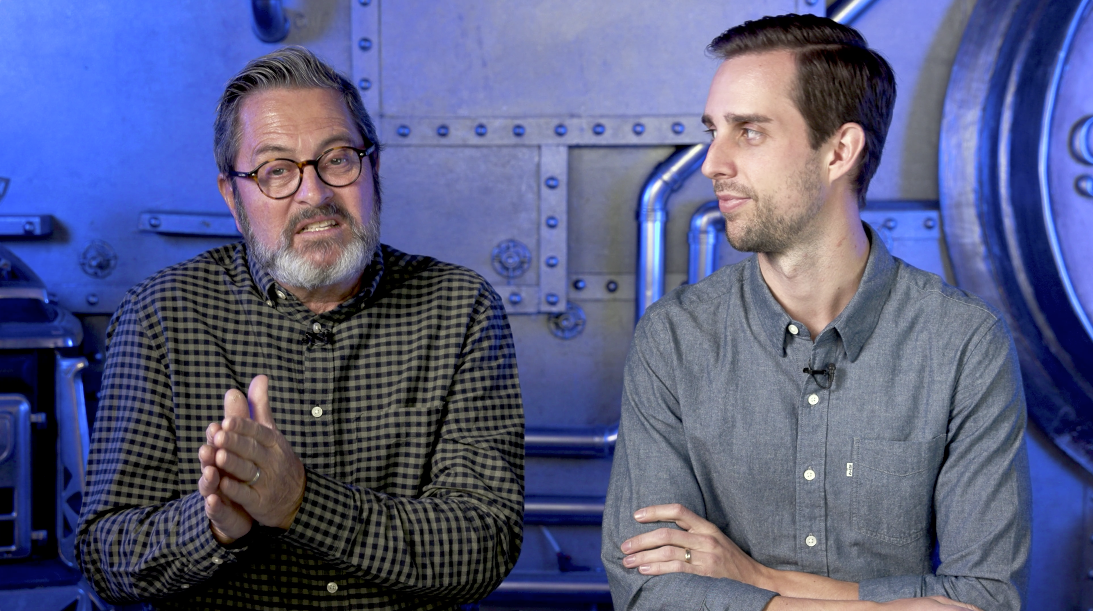 And then I ran out of card at about 20 minutes. So I turned it off and I put a new card in to start a new recording and at about 10 minutes in on the new one it shut the camera down. So I had gotten almost two or almost two, 30 minute clips out of it before it overheated and just shut down. So the R6, even though it has great image stabilization and is wonderfully incredible, it just is not really a video camera. That’s unfortunate to say because it just has everything going for it except for the fact that it doesn’t work very long. Yeah that’s really sad.
And then I ran out of card at about 20 minutes. So I turned it off and I put a new card in to start a new recording and at about 10 minutes in on the new one it shut the camera down. So I had gotten almost two or almost two, 30 minute clips out of it before it overheated and just shut down. So the R6, even though it has great image stabilization and is wonderfully incredible, it just is not really a video camera. That’s unfortunate to say because it just has everything going for it except for the fact that it doesn’t work very long. Yeah that’s really sad.
So Alright, so who are these cameras for? How did the Nikon do? This is the first time we’ve looked at this Nikon. I was really excited to try it out and it was kind of let down a little bit. Image wise, of course it’s nice. I mean Nikon always produces a great image. The autofocus just kind of killed it. For me. That was surprising. It really did not perform the way you would expect it to.
The Canon R6 in almost every test just killed it and came out on top with the exception of the dynamic range test and of course the video that we just talked about. But everything else in terms of image quality and the speed for shooting autofocus was incredible. Low light was incredible.
I have a hard time saying you can pick the R6 when you can’t really do video with it. But if you don’t want to do video then I think the R6 is an incredible camera.
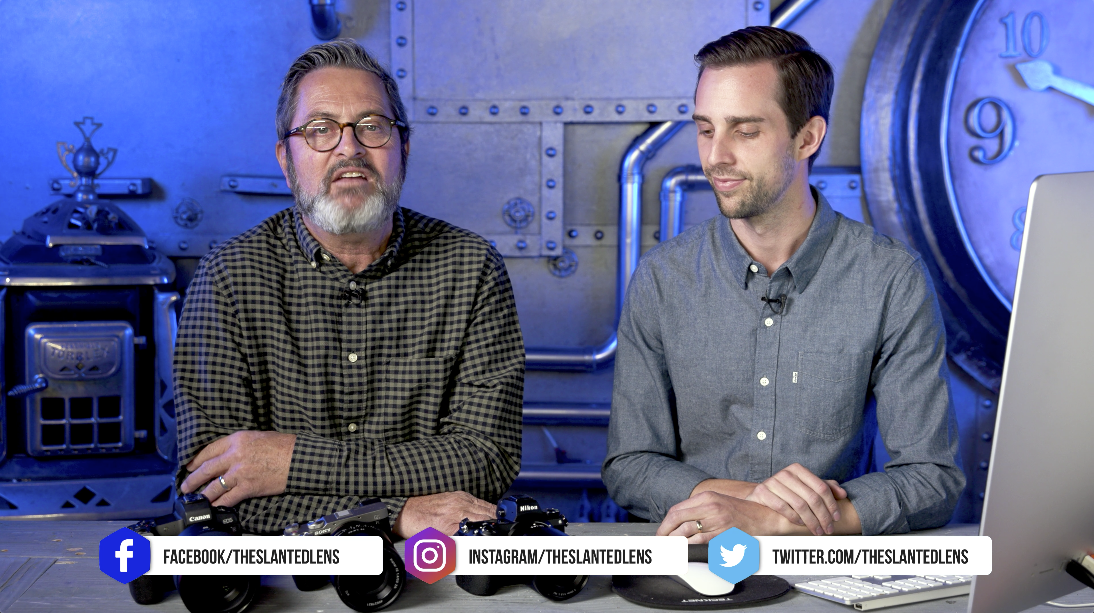 Well there you have it. There’s a camera for everyone. You know these decisions really come down to a lot of times, where have you invested your money in lenses? Because we’re switching over to digital right now, we have the RF lens series that Canon is bringing on. We have the Z series lenses from Nikon and so you have to decide. “Am I going to commit myself to one of these platforms?” You’re going to spend money on glass and hopefully the camera manufacturers will keep cameras coming that will keep up with the technology and allow you to stay with your lens choice.
Well there you have it. There’s a camera for everyone. You know these decisions really come down to a lot of times, where have you invested your money in lenses? Because we’re switching over to digital right now, we have the RF lens series that Canon is bringing on. We have the Z series lenses from Nikon and so you have to decide. “Am I going to commit myself to one of these platforms?” You’re going to spend money on glass and hopefully the camera manufacturers will keep cameras coming that will keep up with the technology and allow you to stay with your lens choice.
So there’s three great cameras. Not the highest in this case with the manufacturers but the next one step down and great, great cameras to choose from. Leave us some comments on our YouTube channel. Let us know what camera you would choose and why you would like and choose the camera that you have. We’d love to hear from you. So make sure you subscribe to The Slanted Lens and keep those cameras rollin’ and keep on clickin’.
Check out Tamron Lenses.
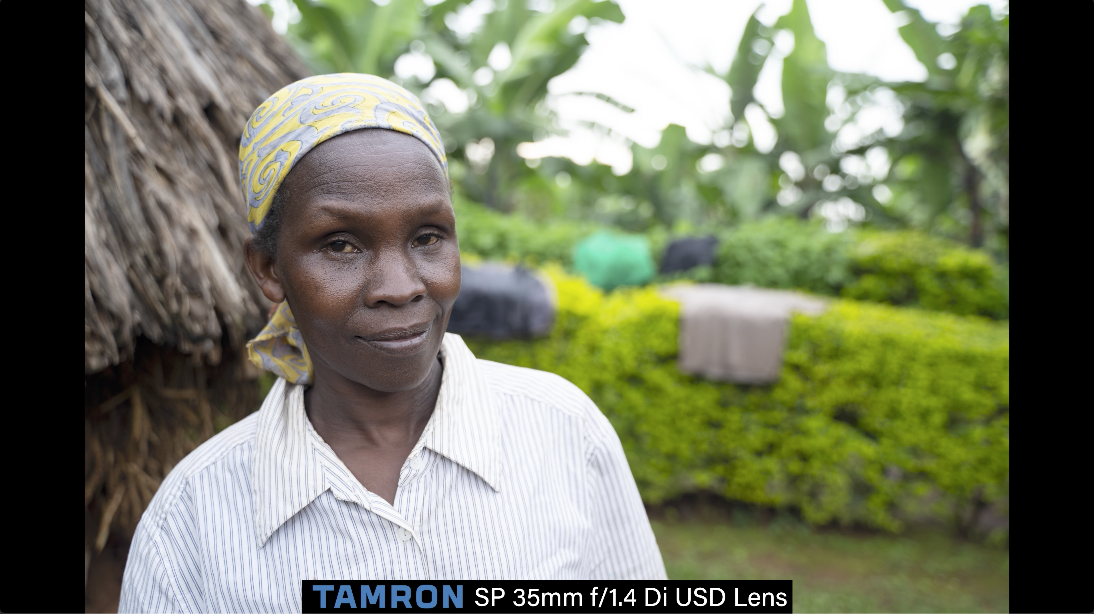
Leave a Reply